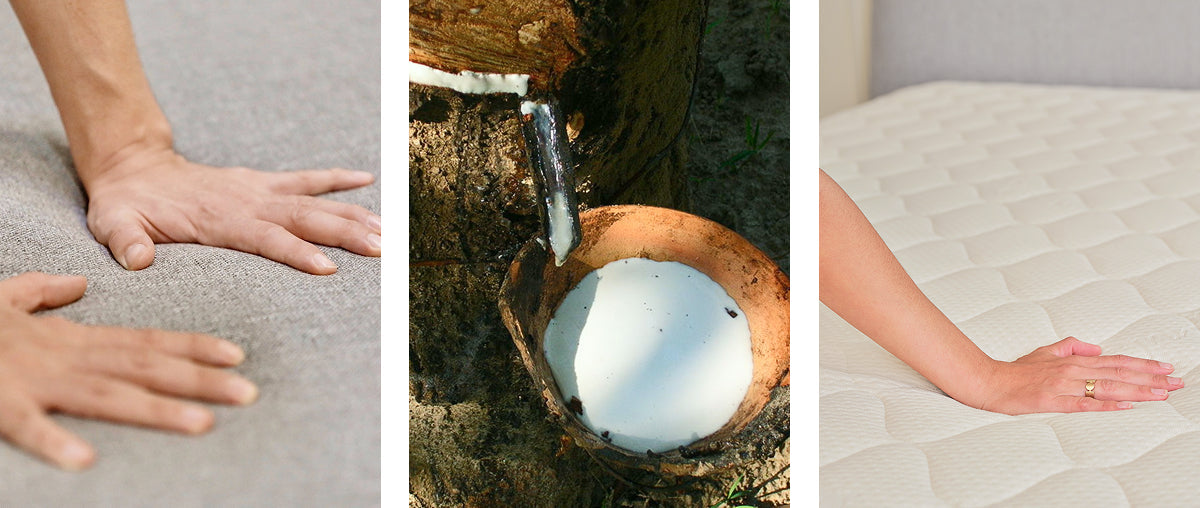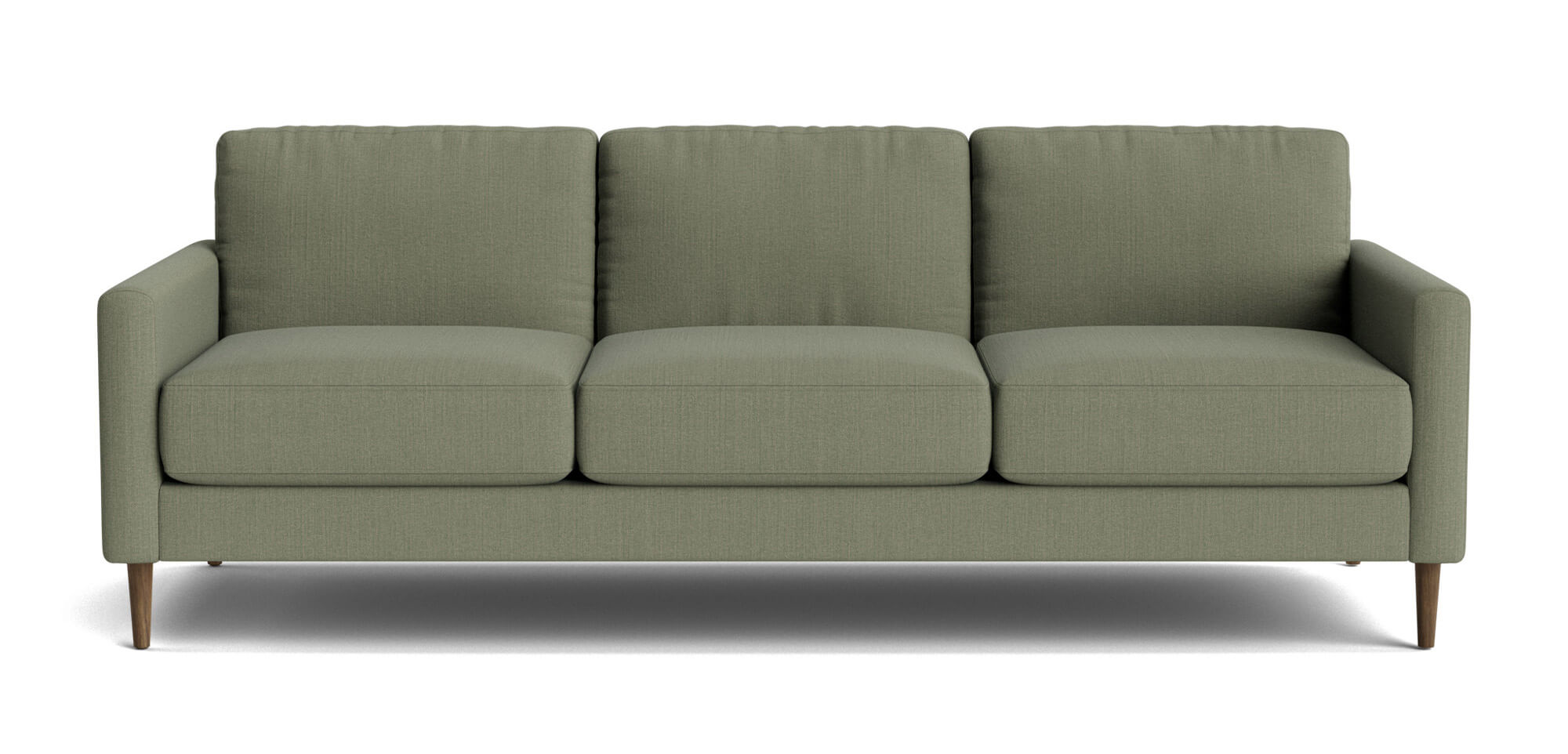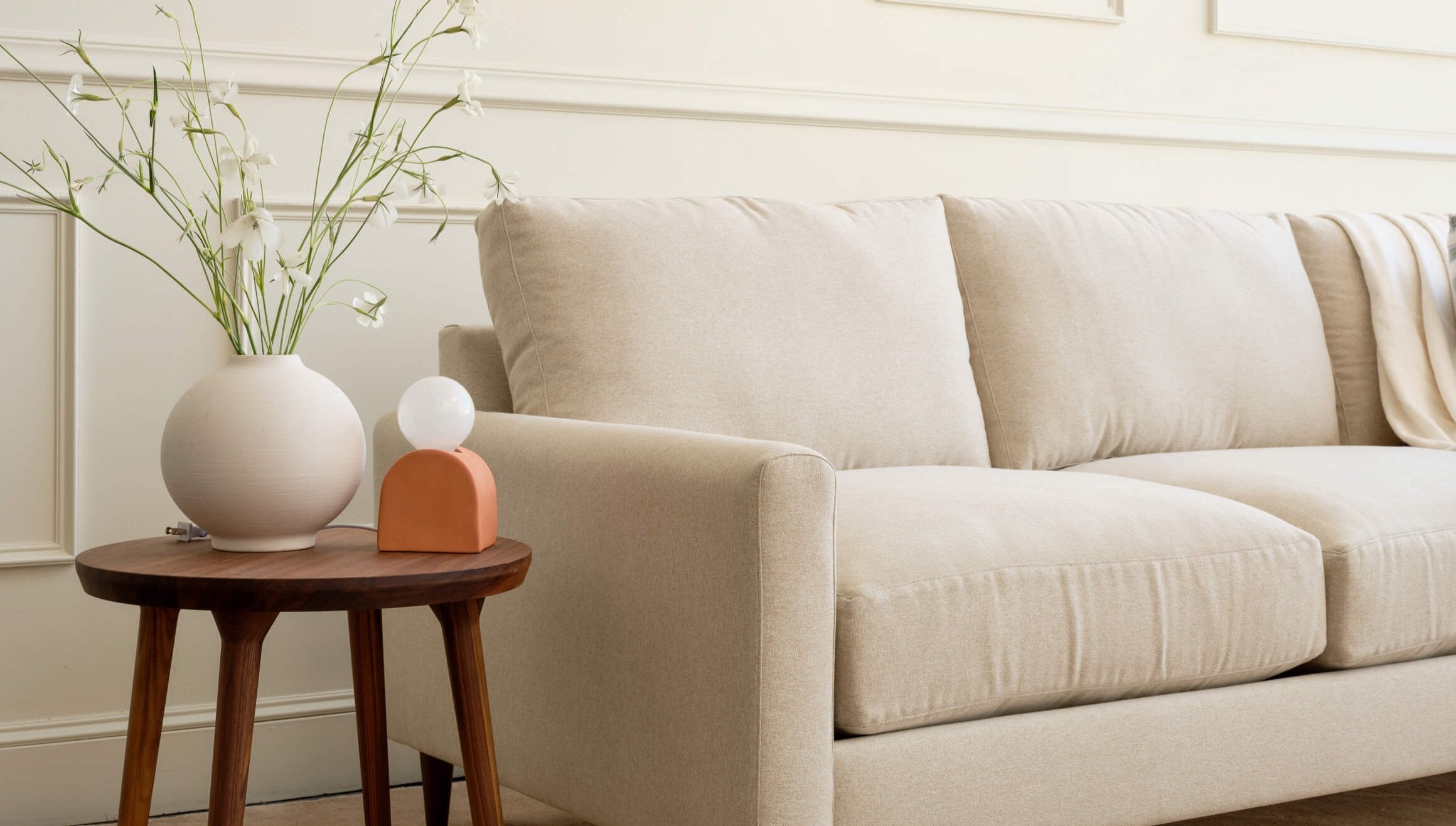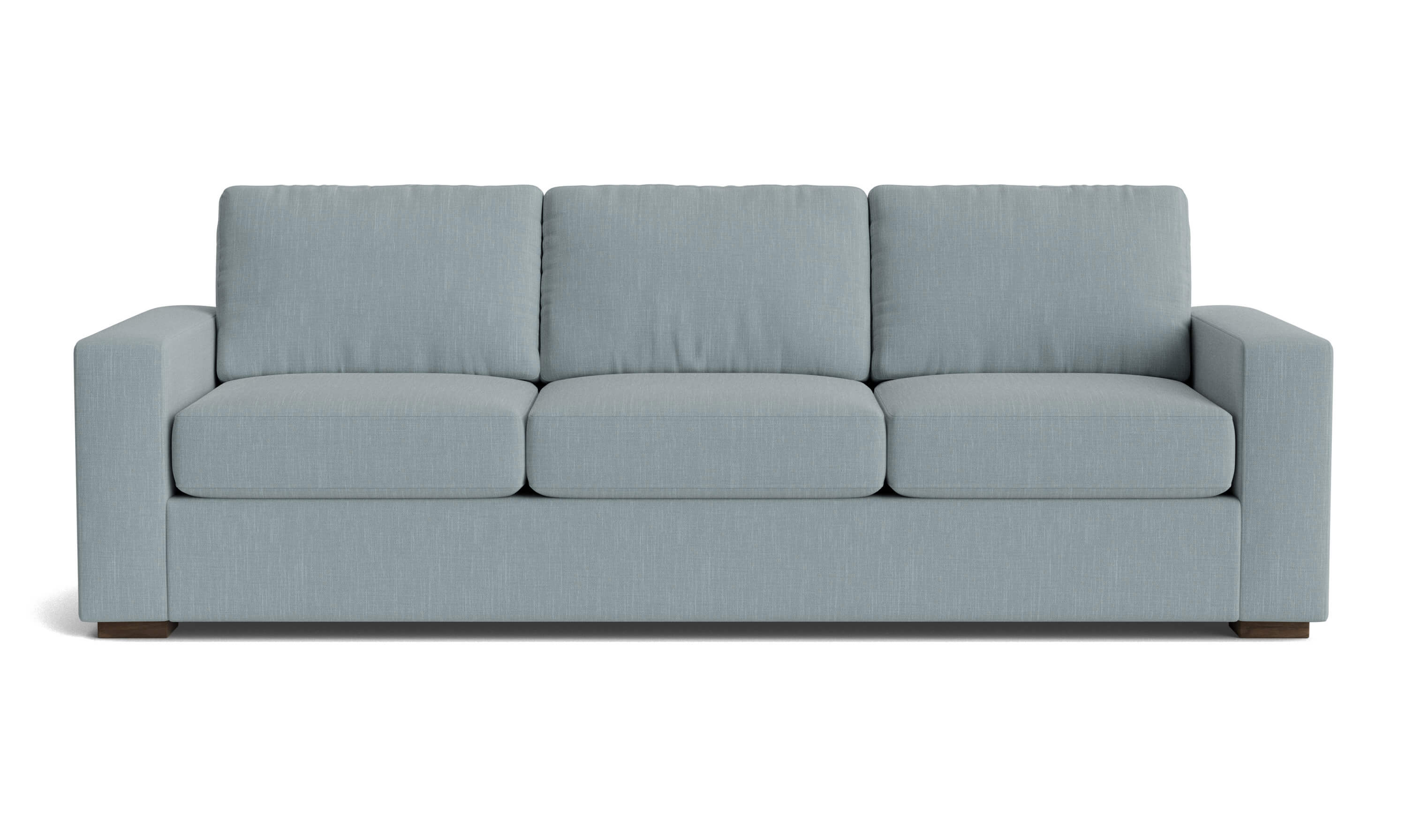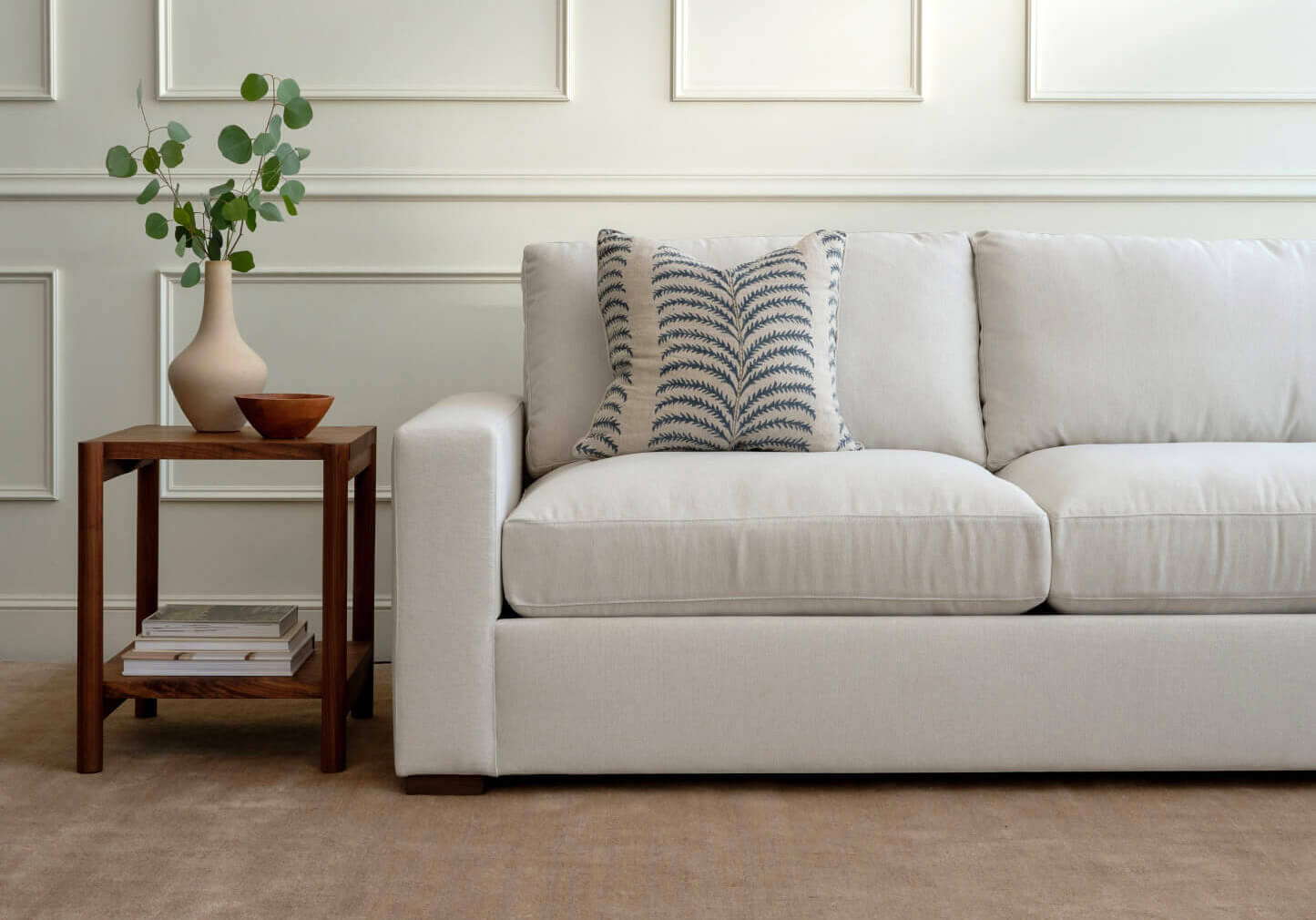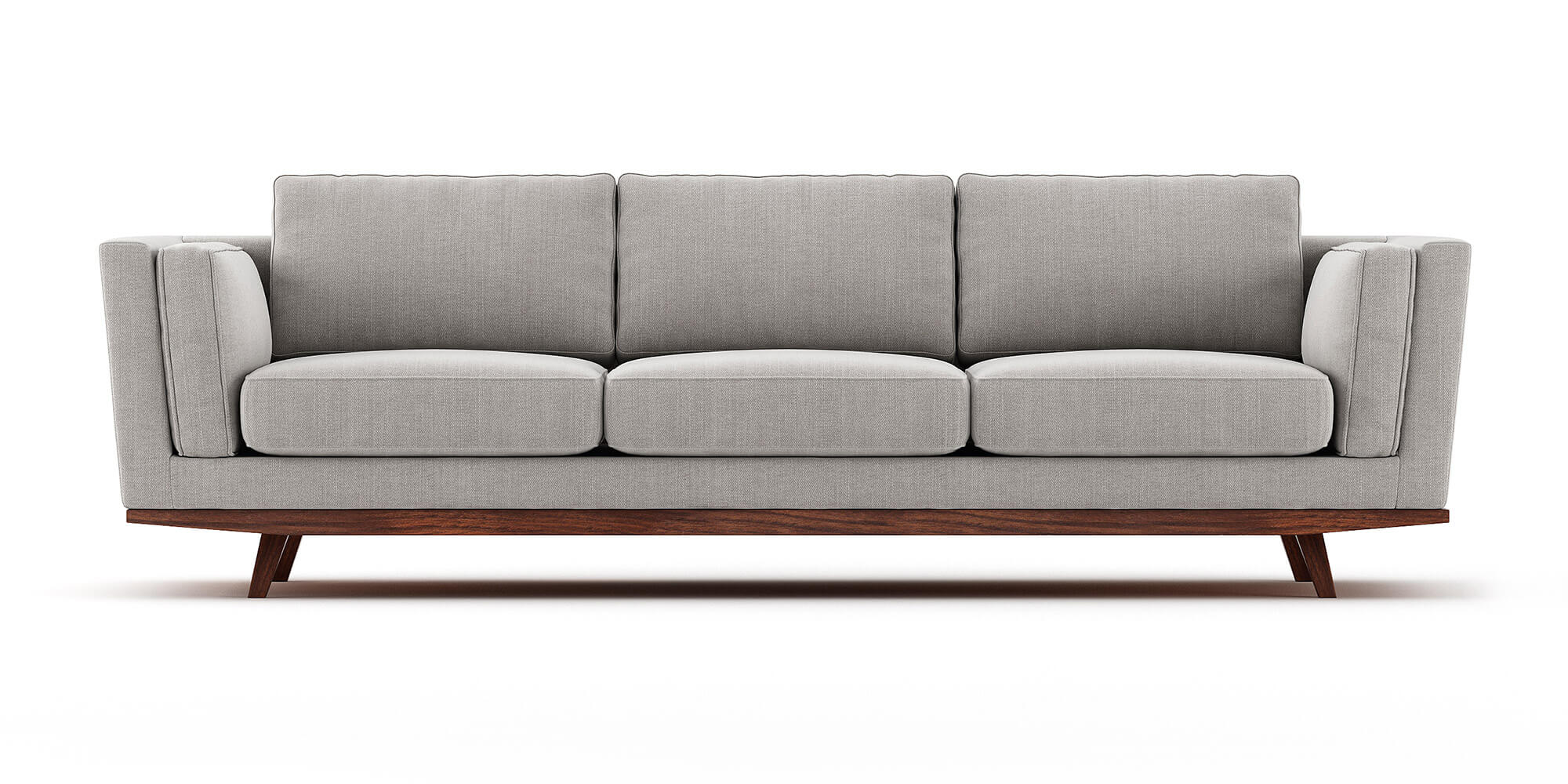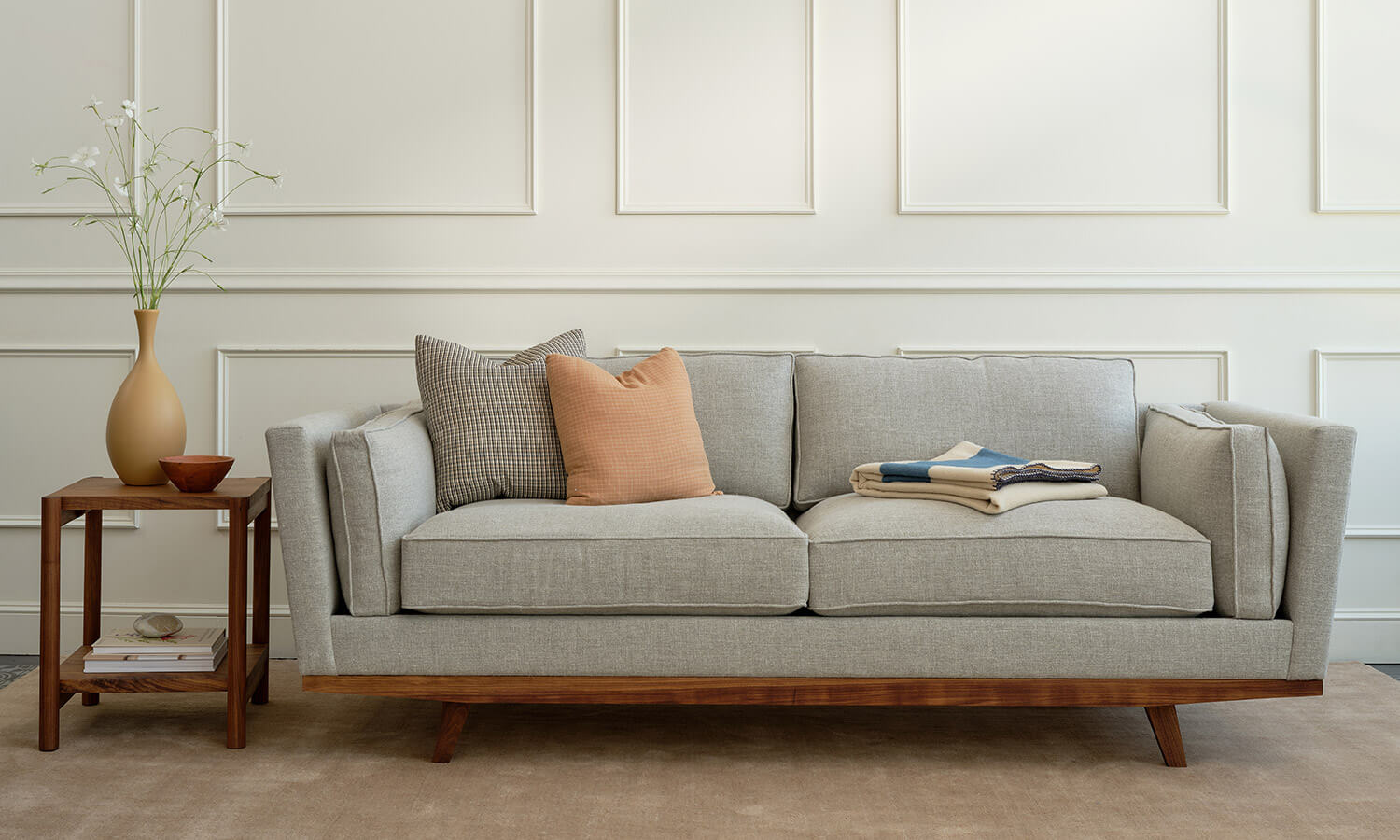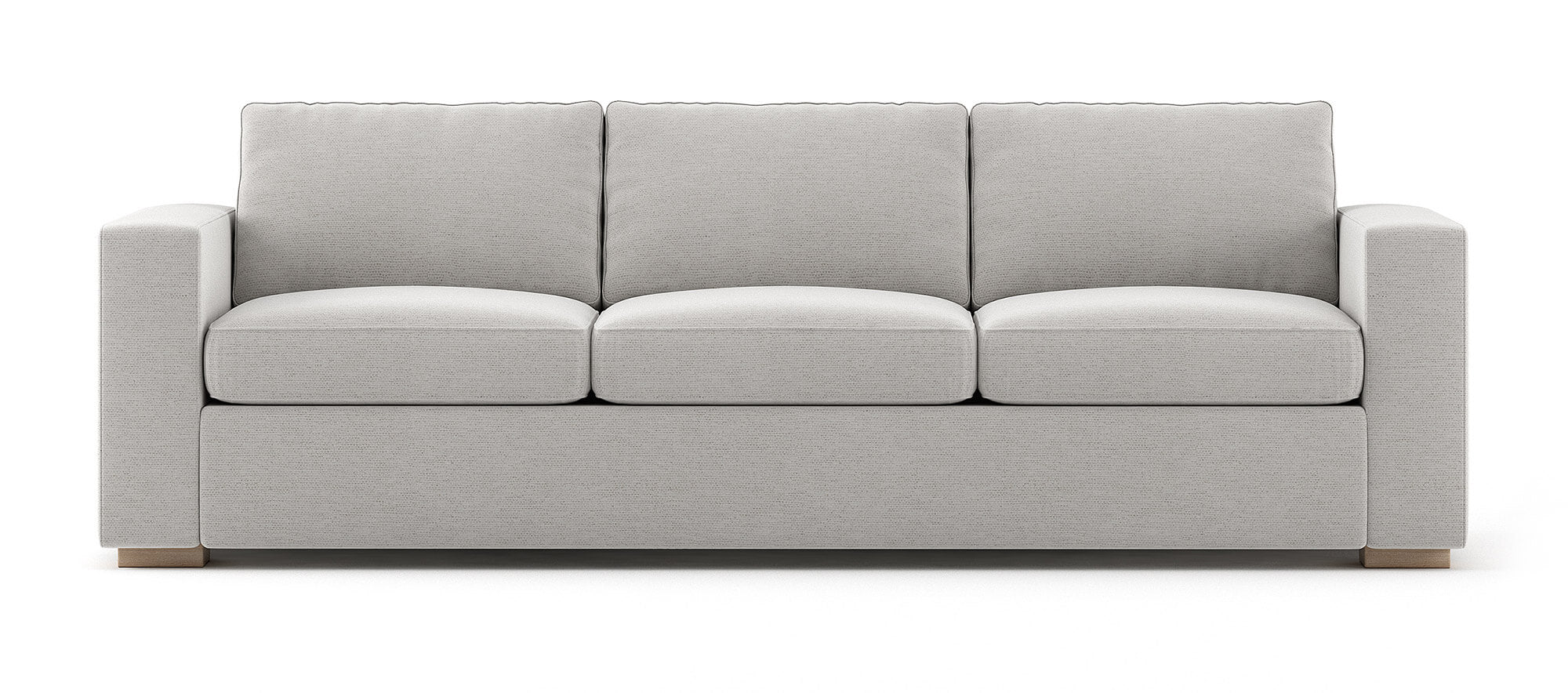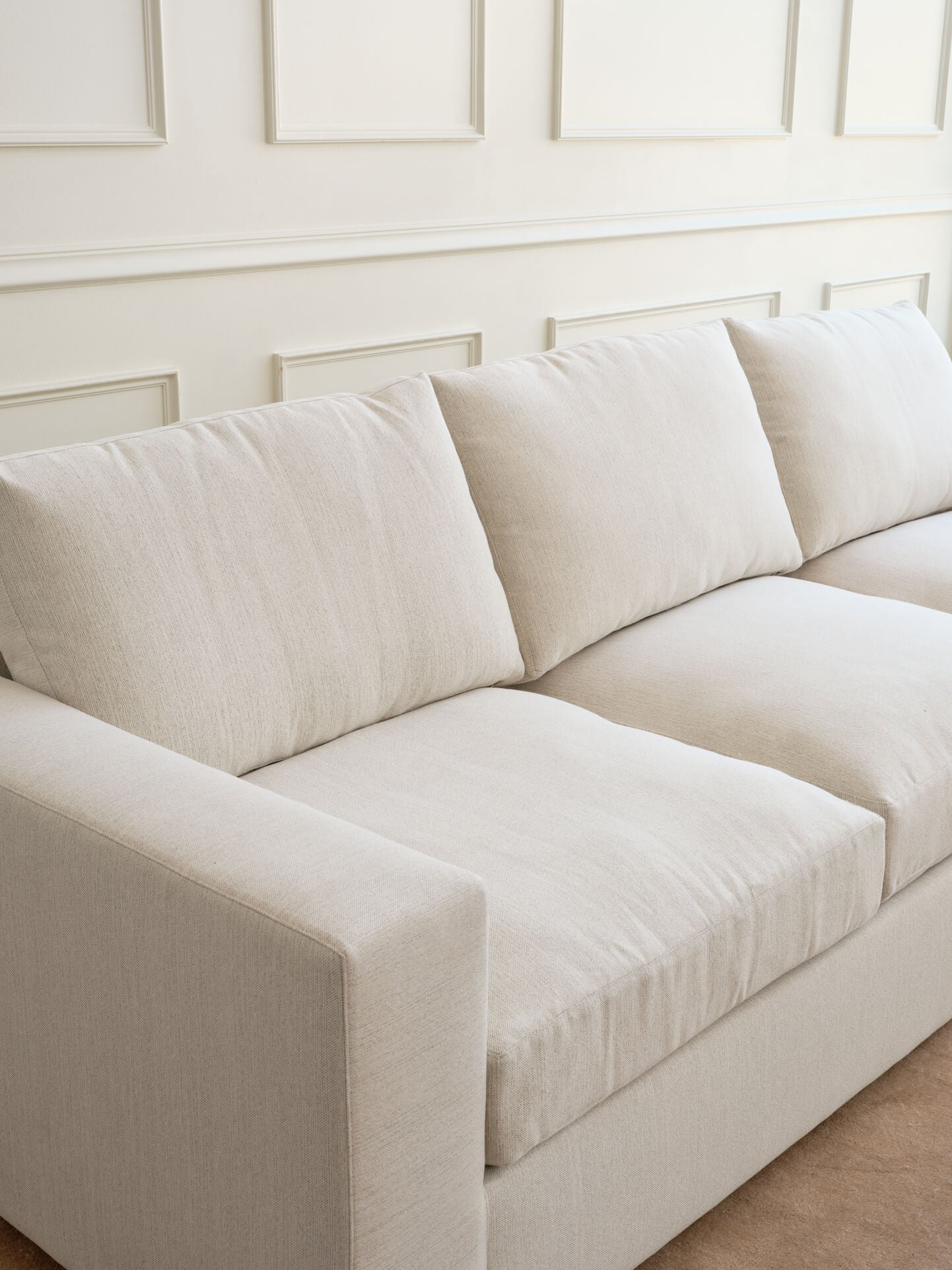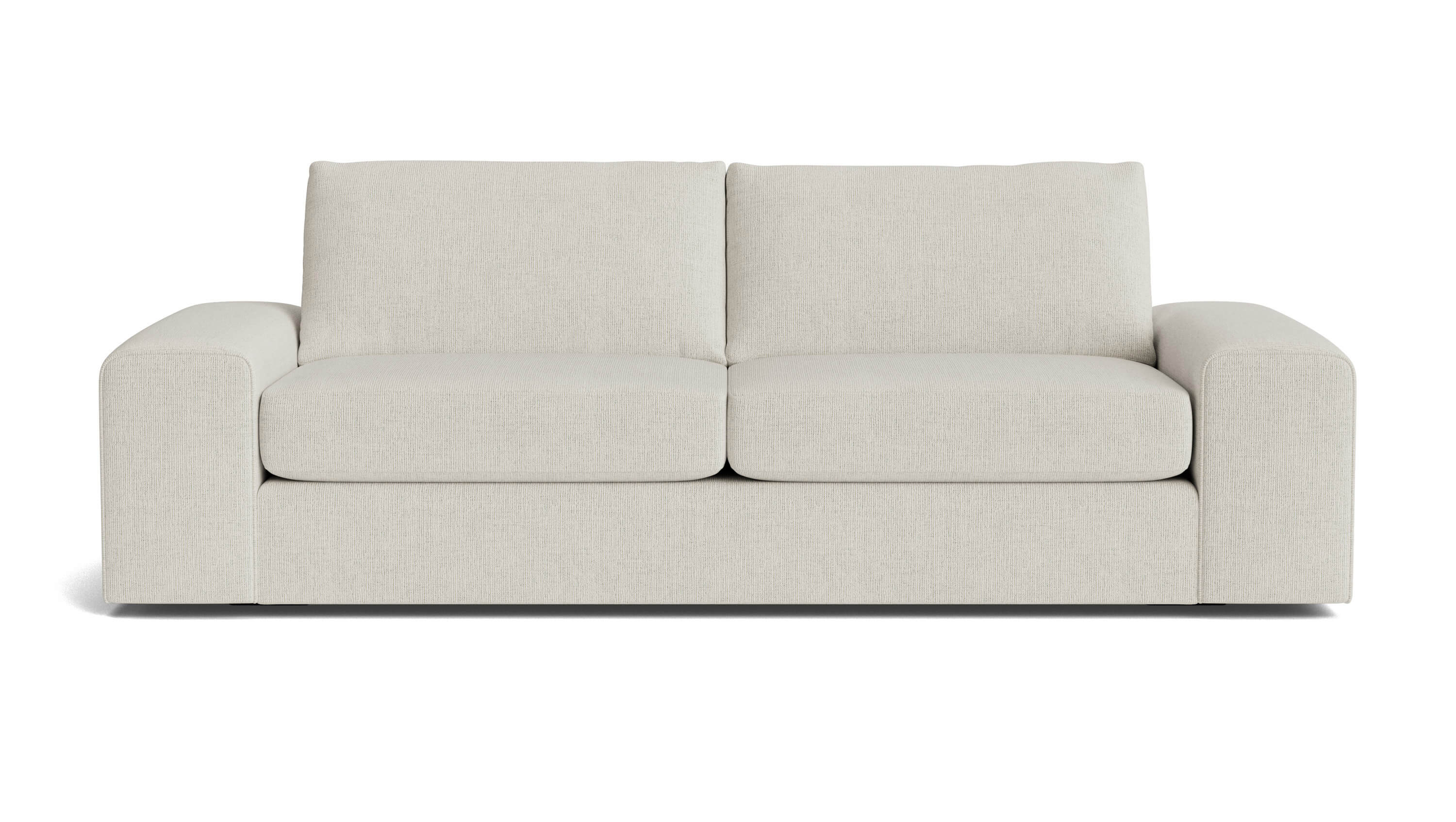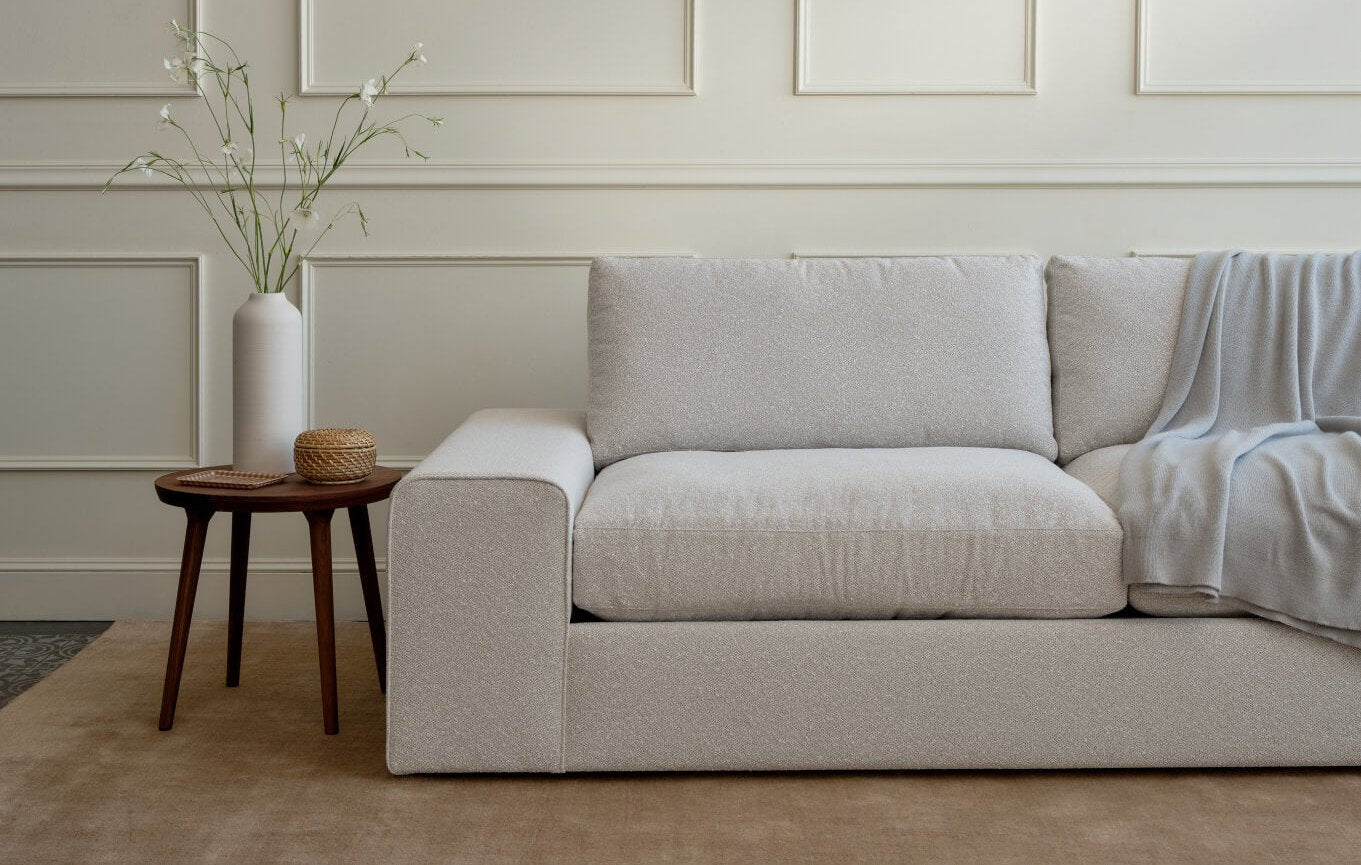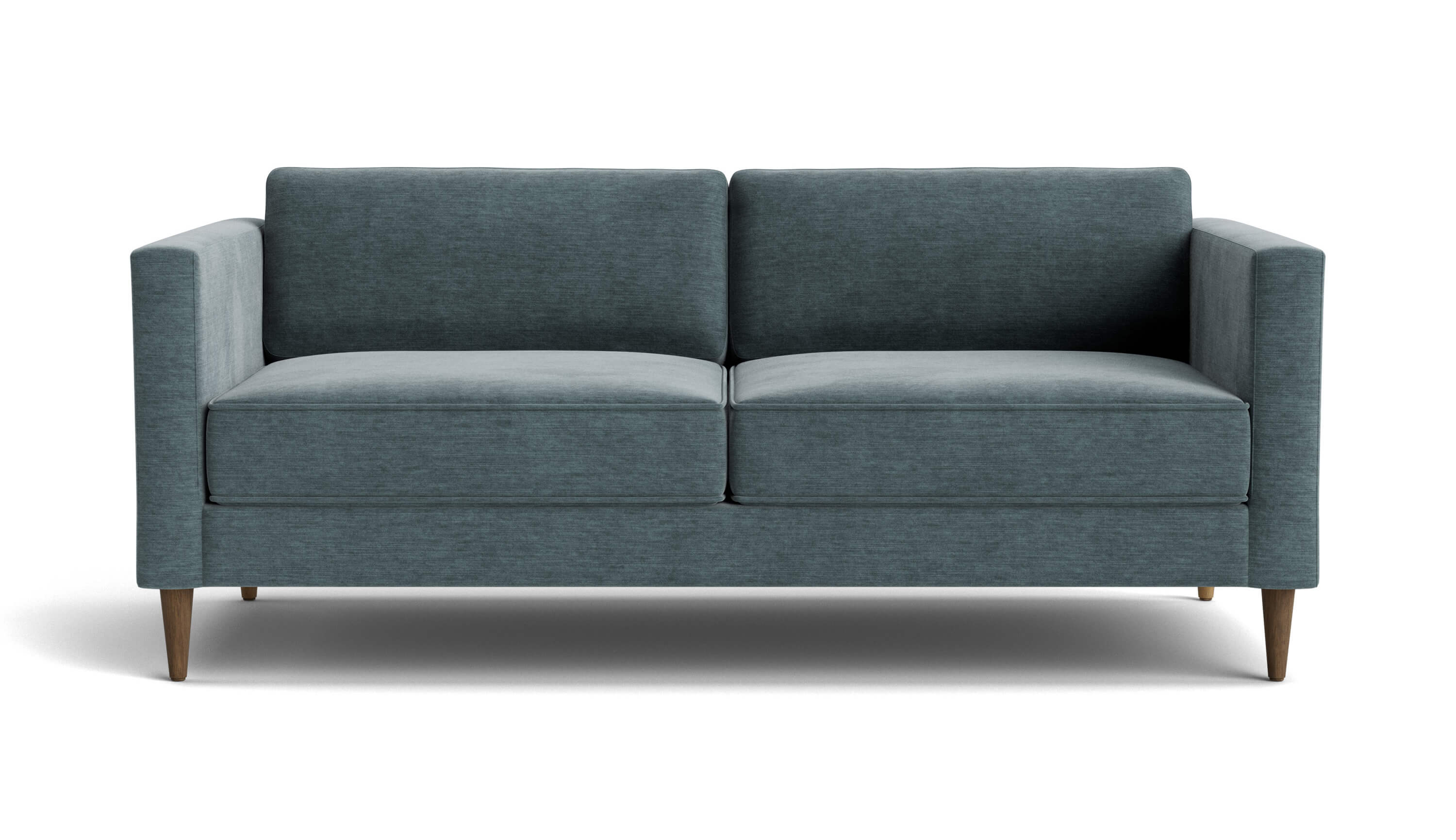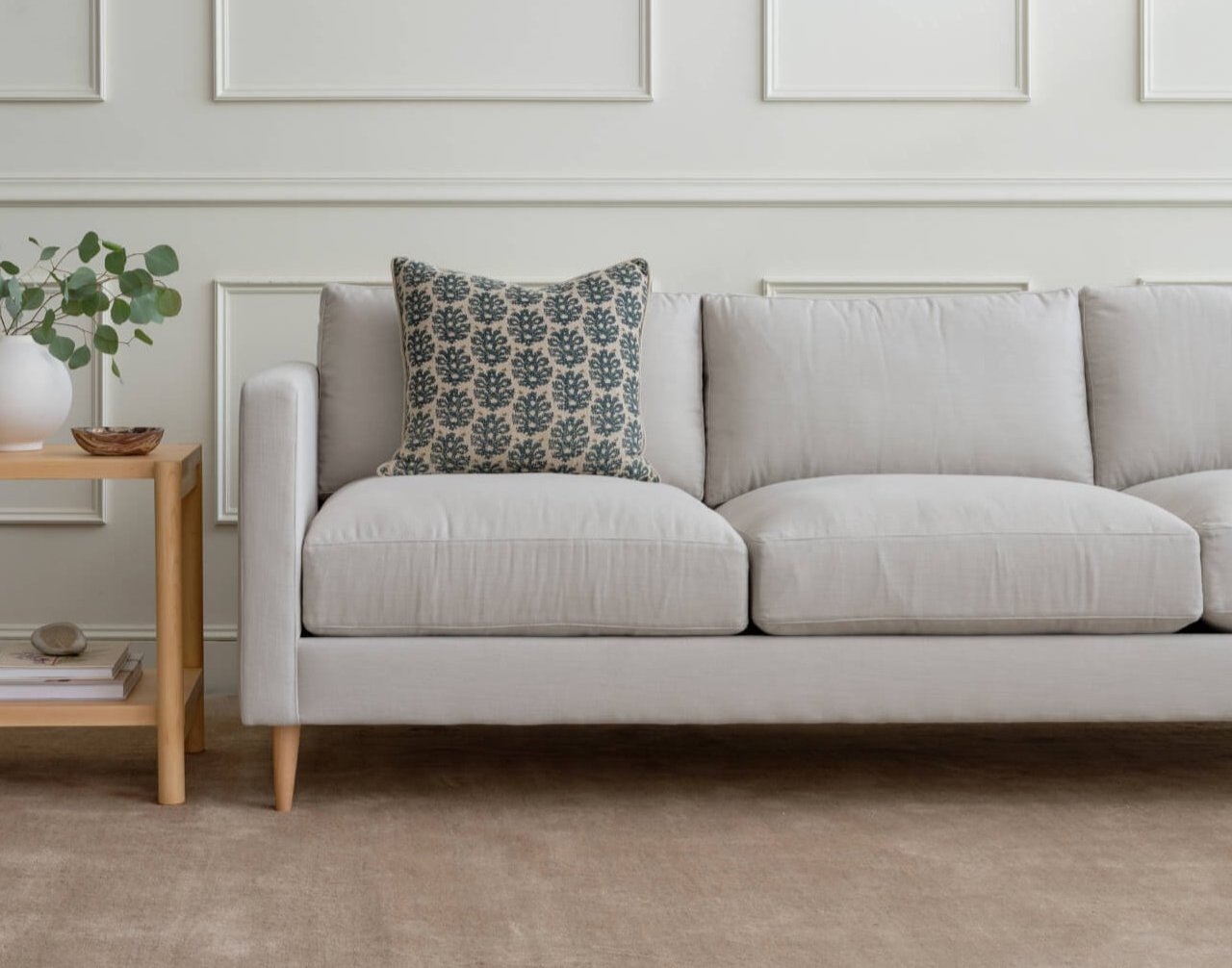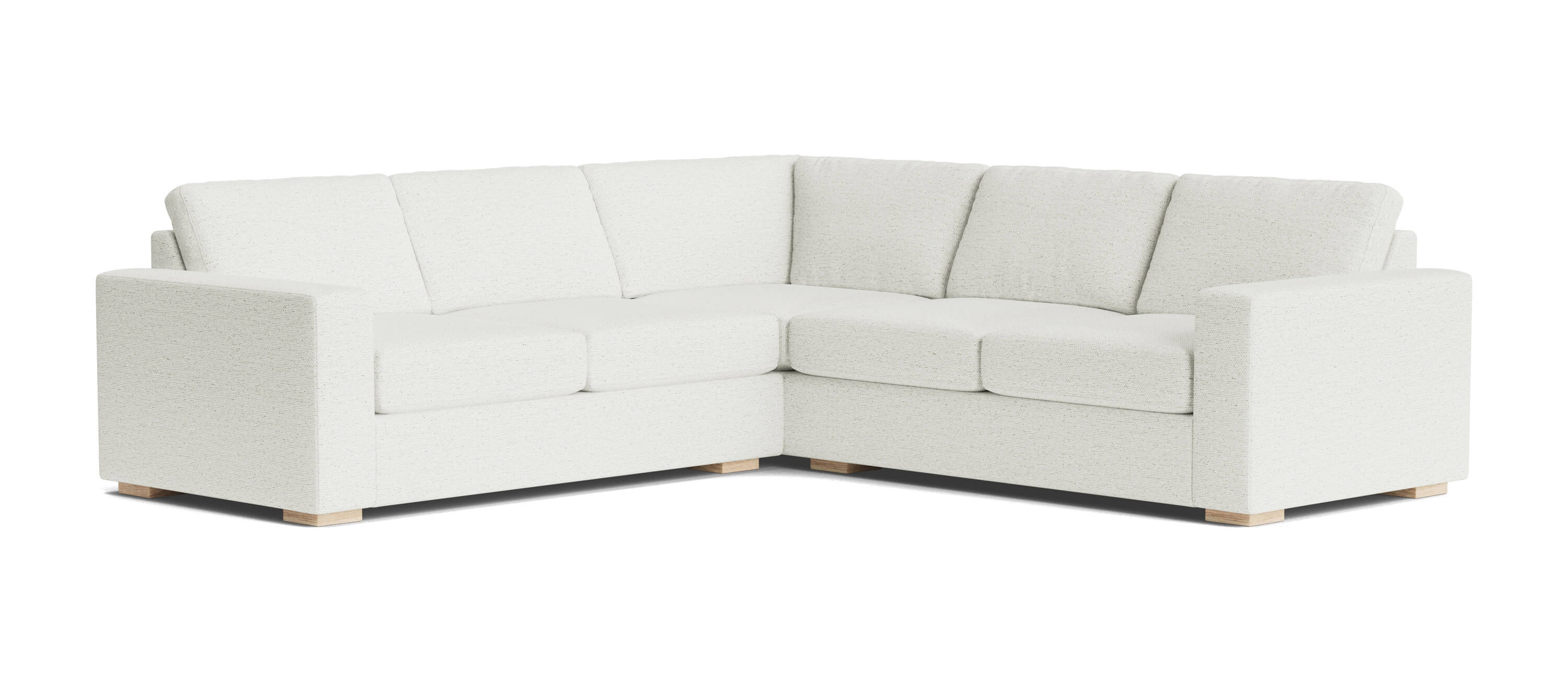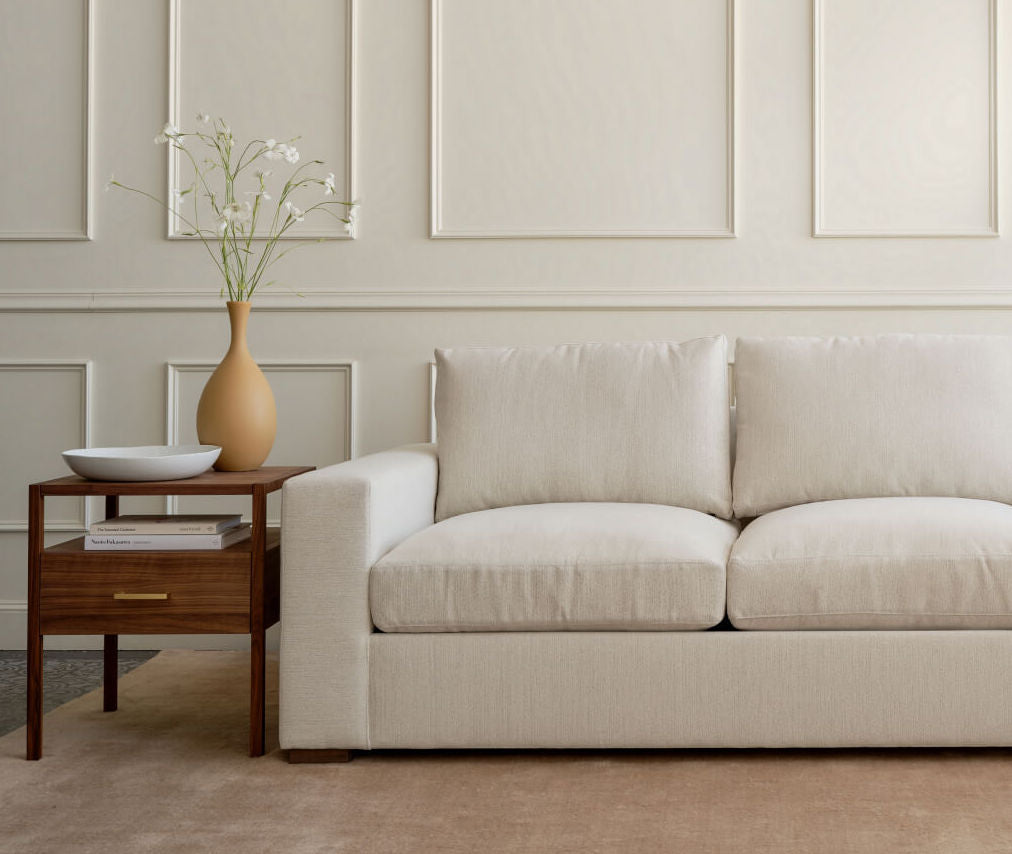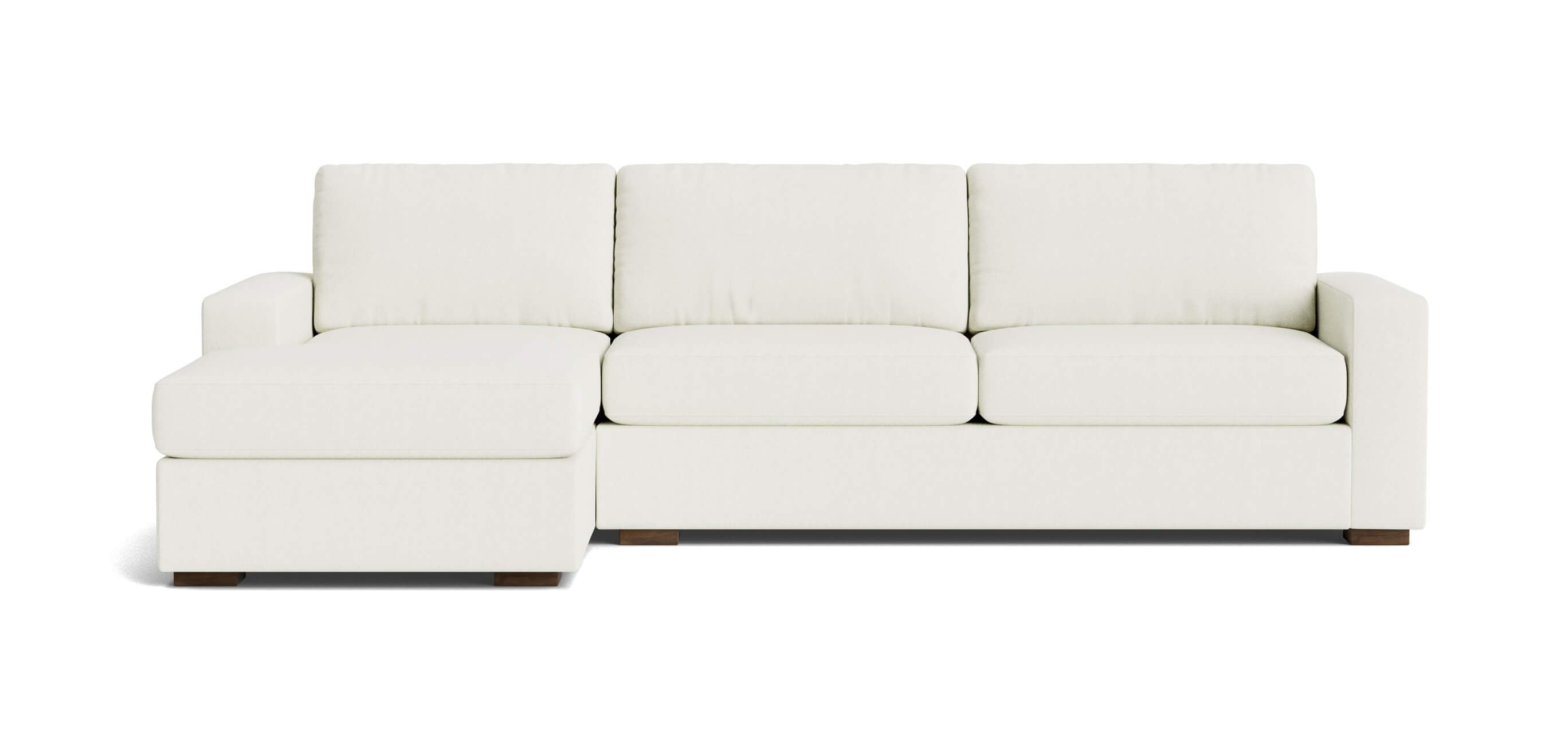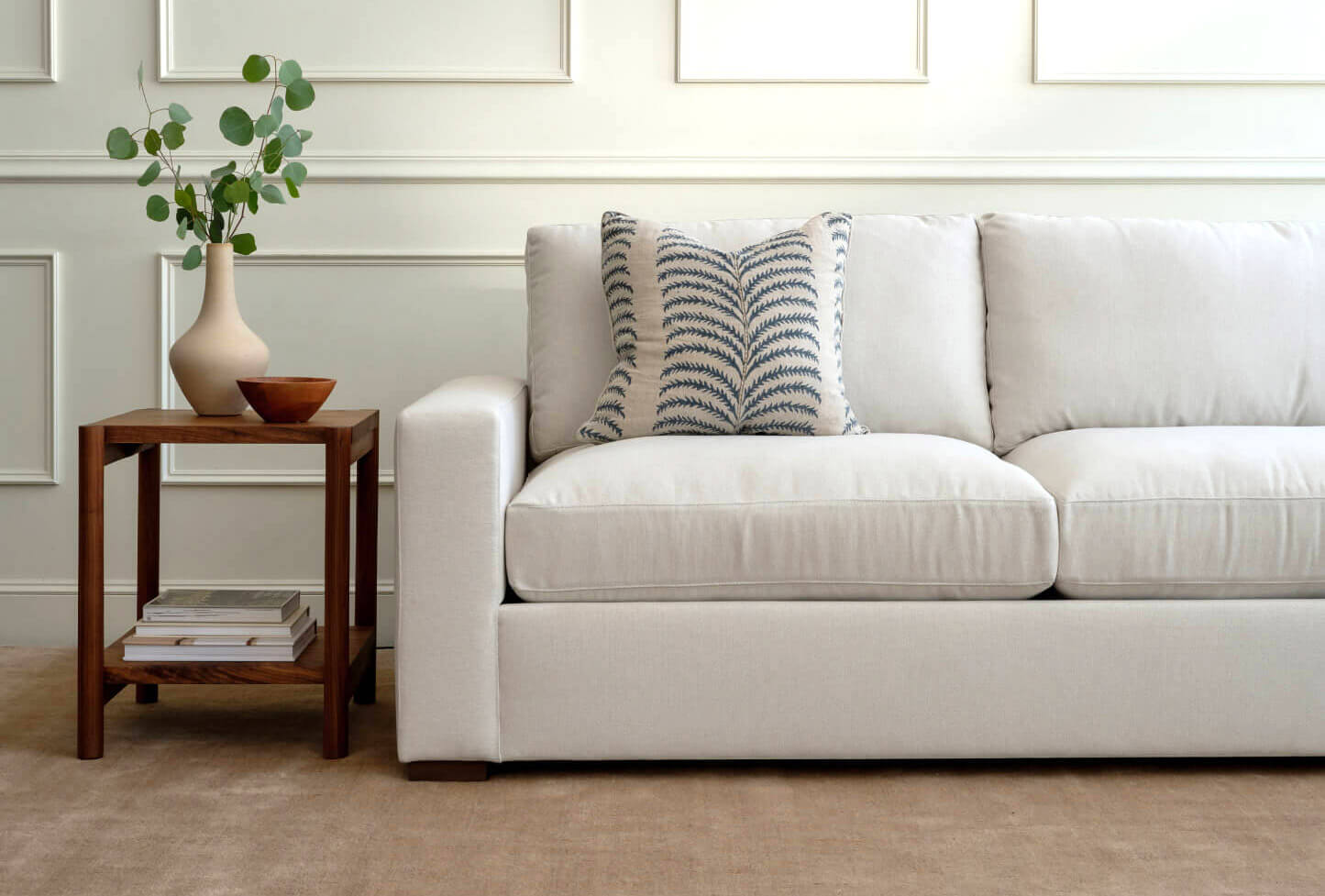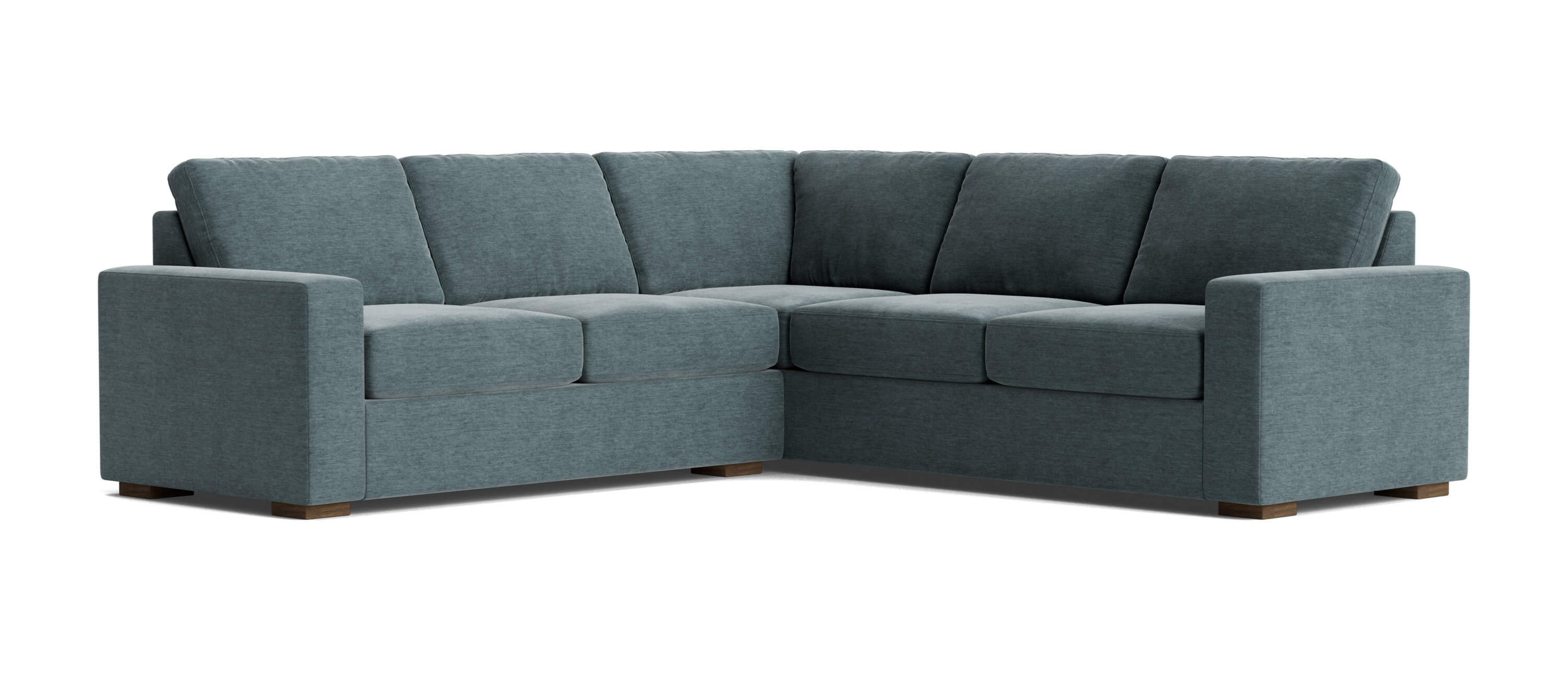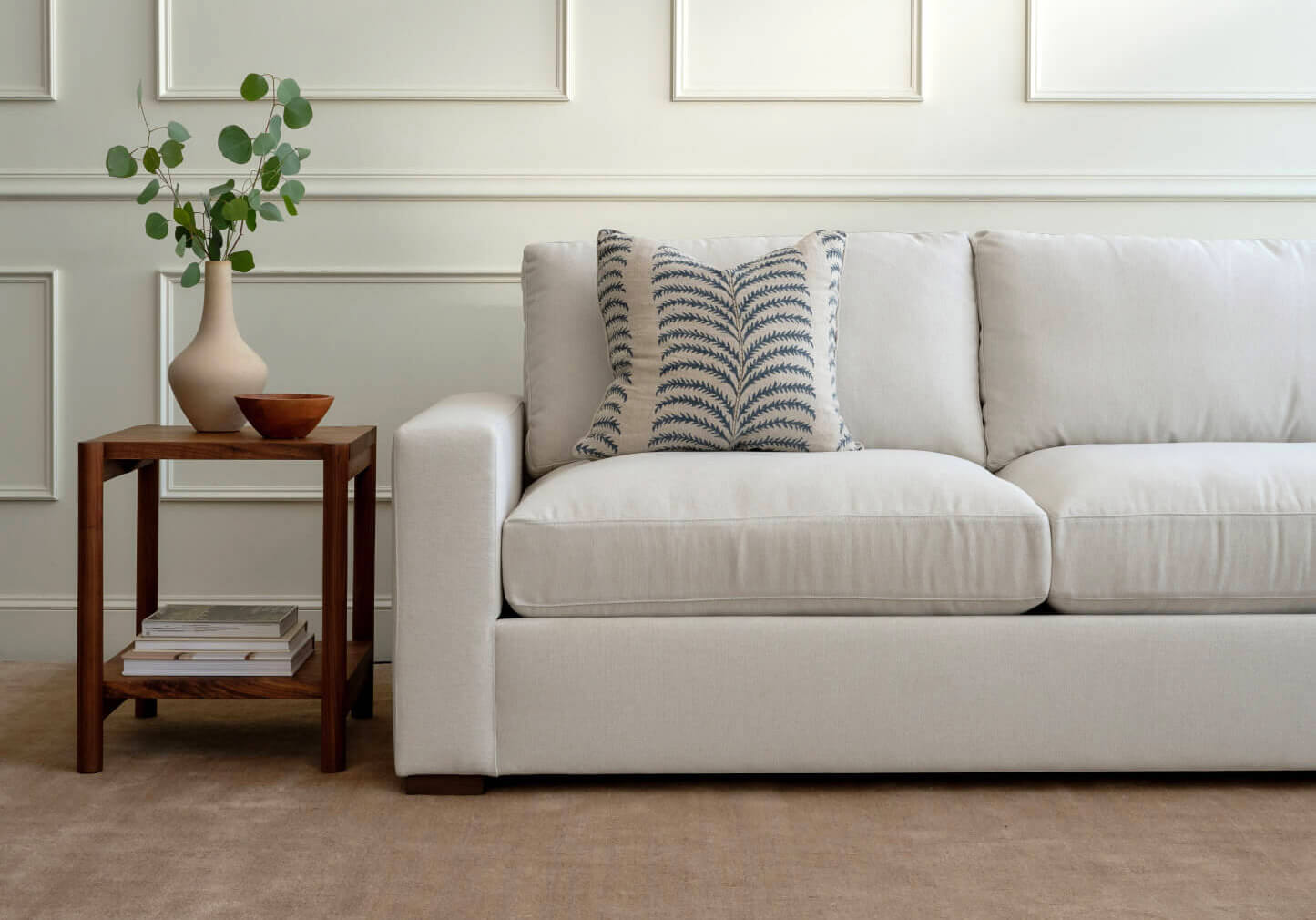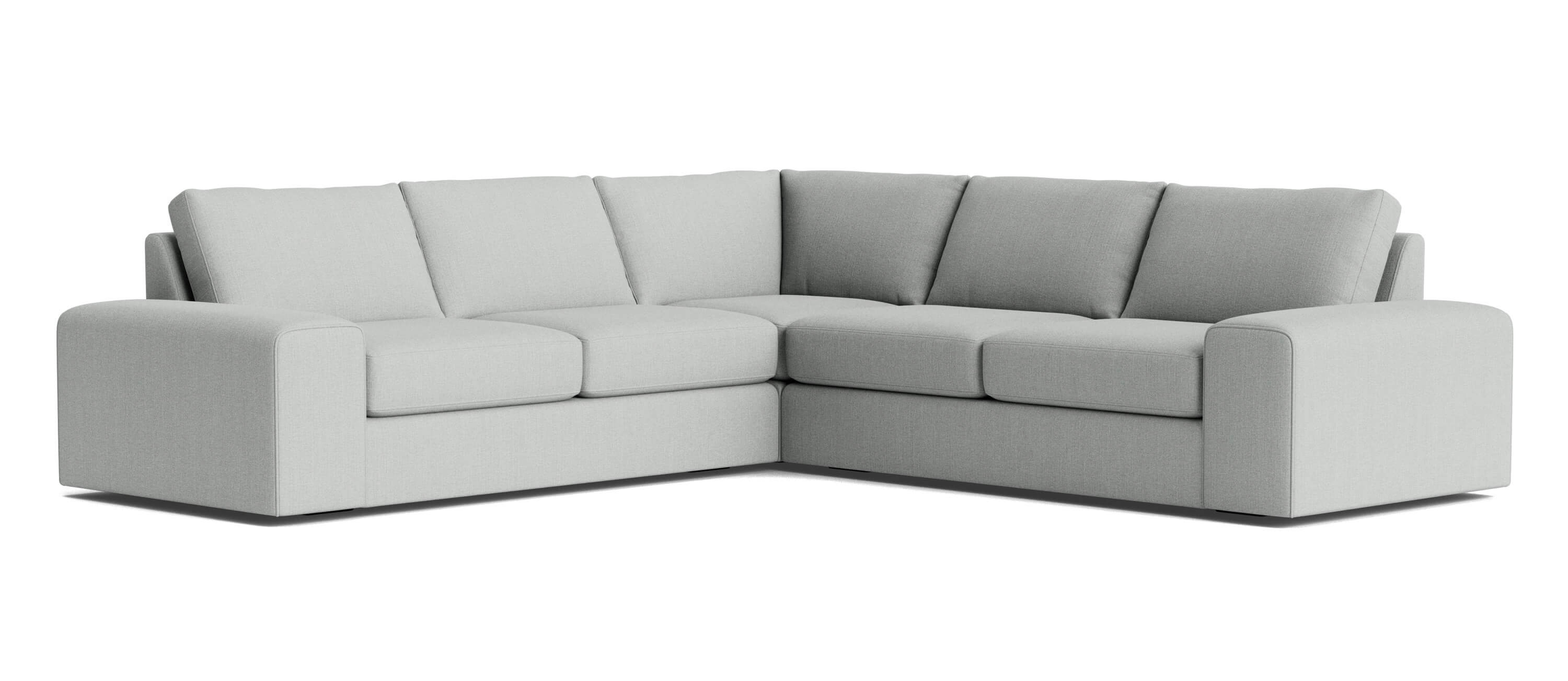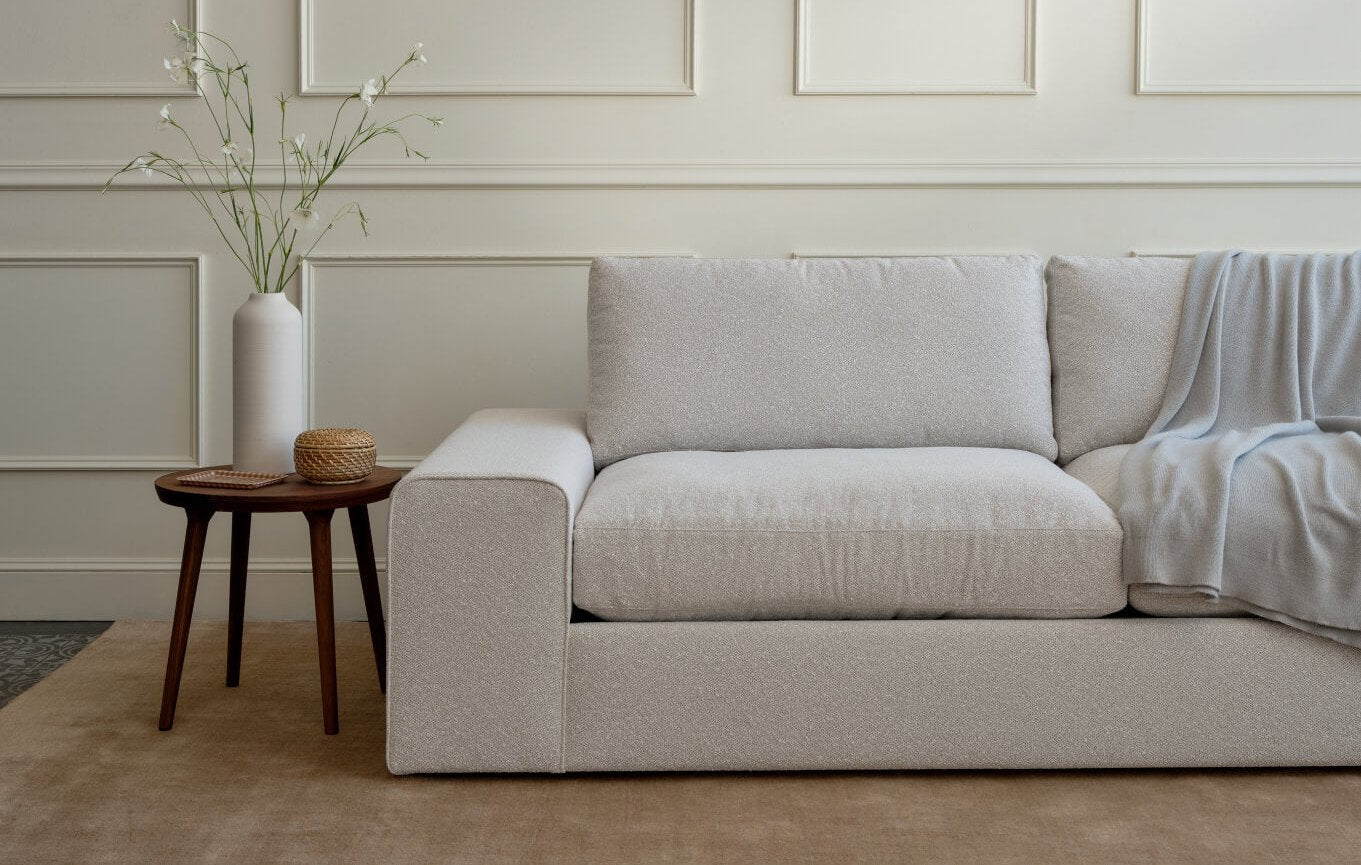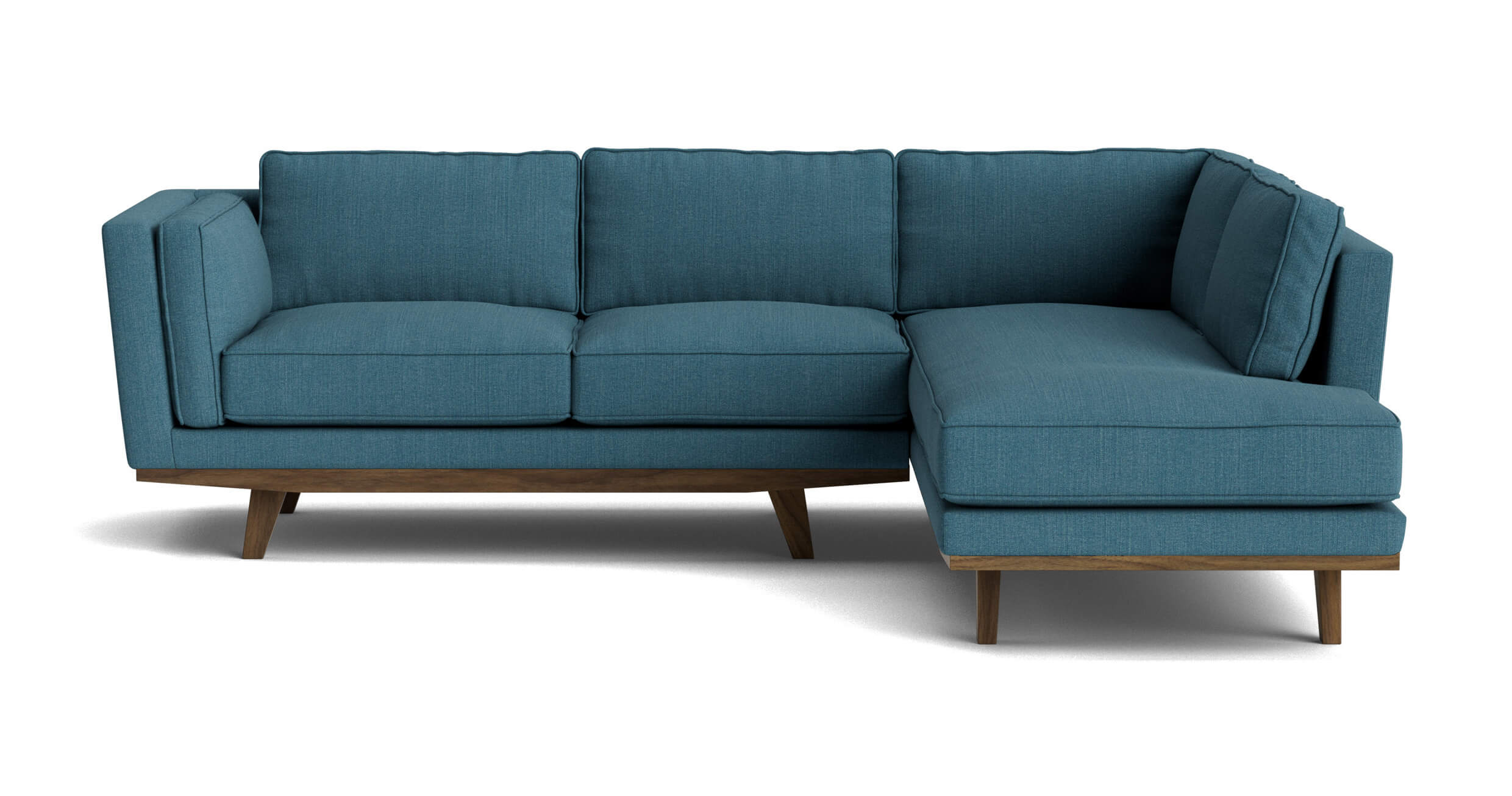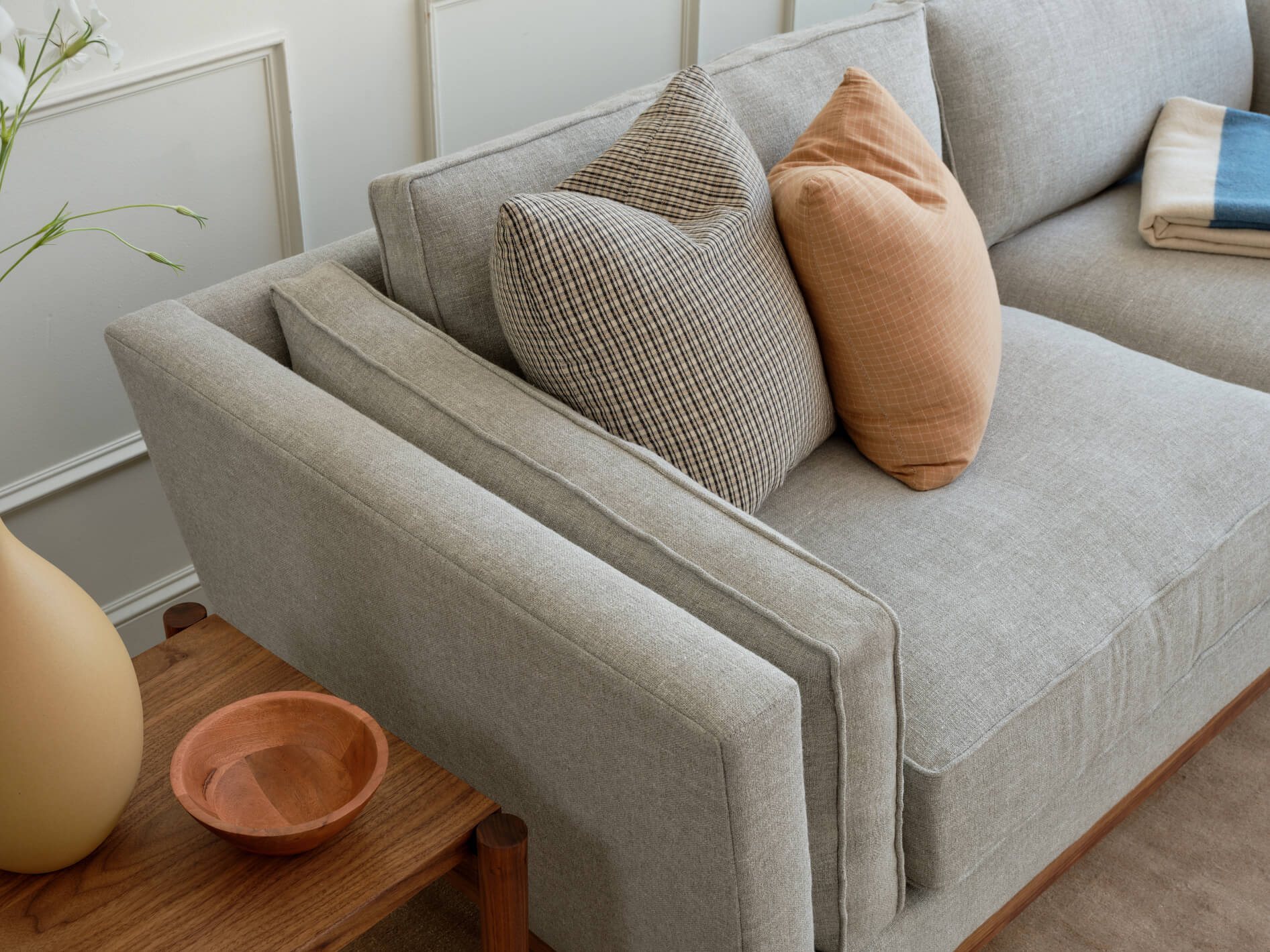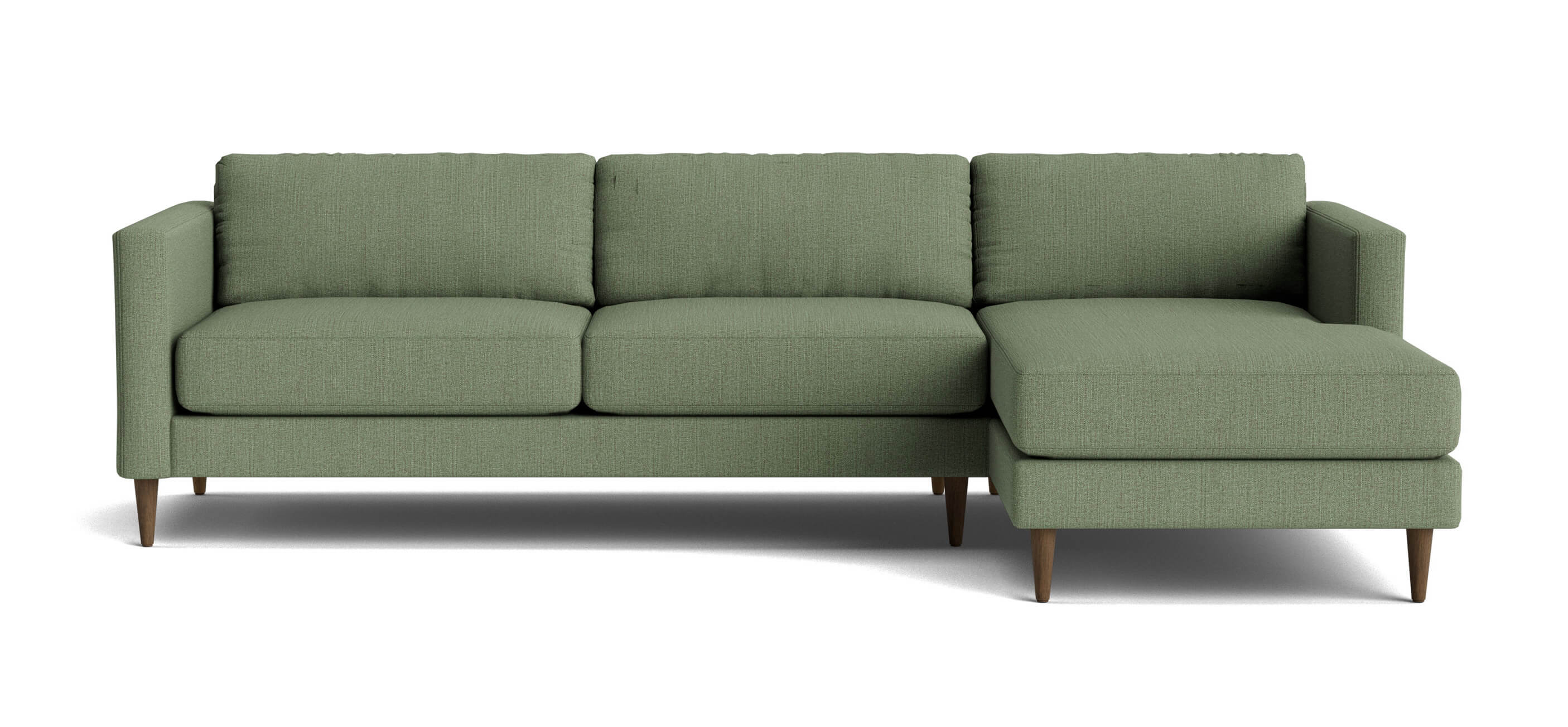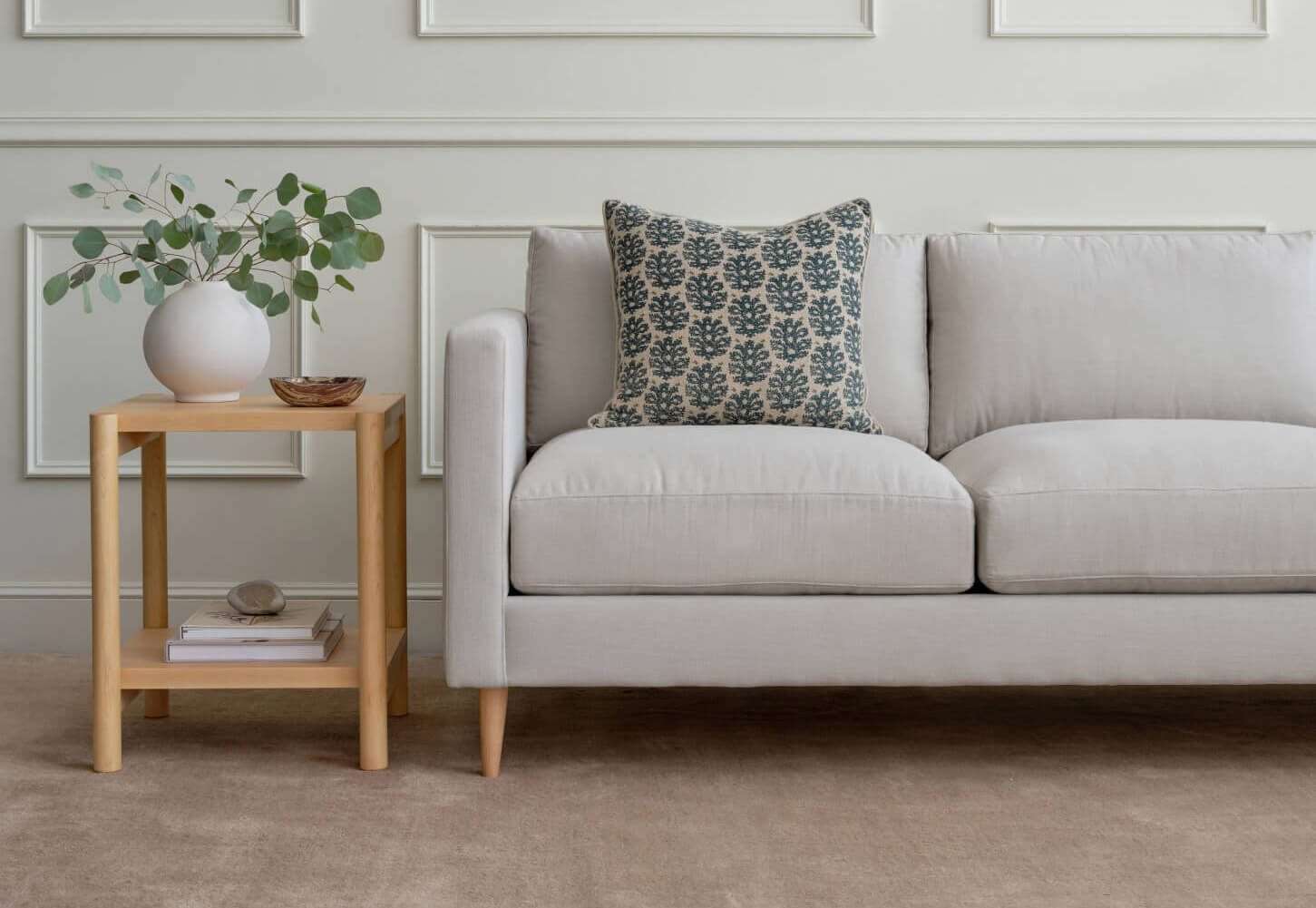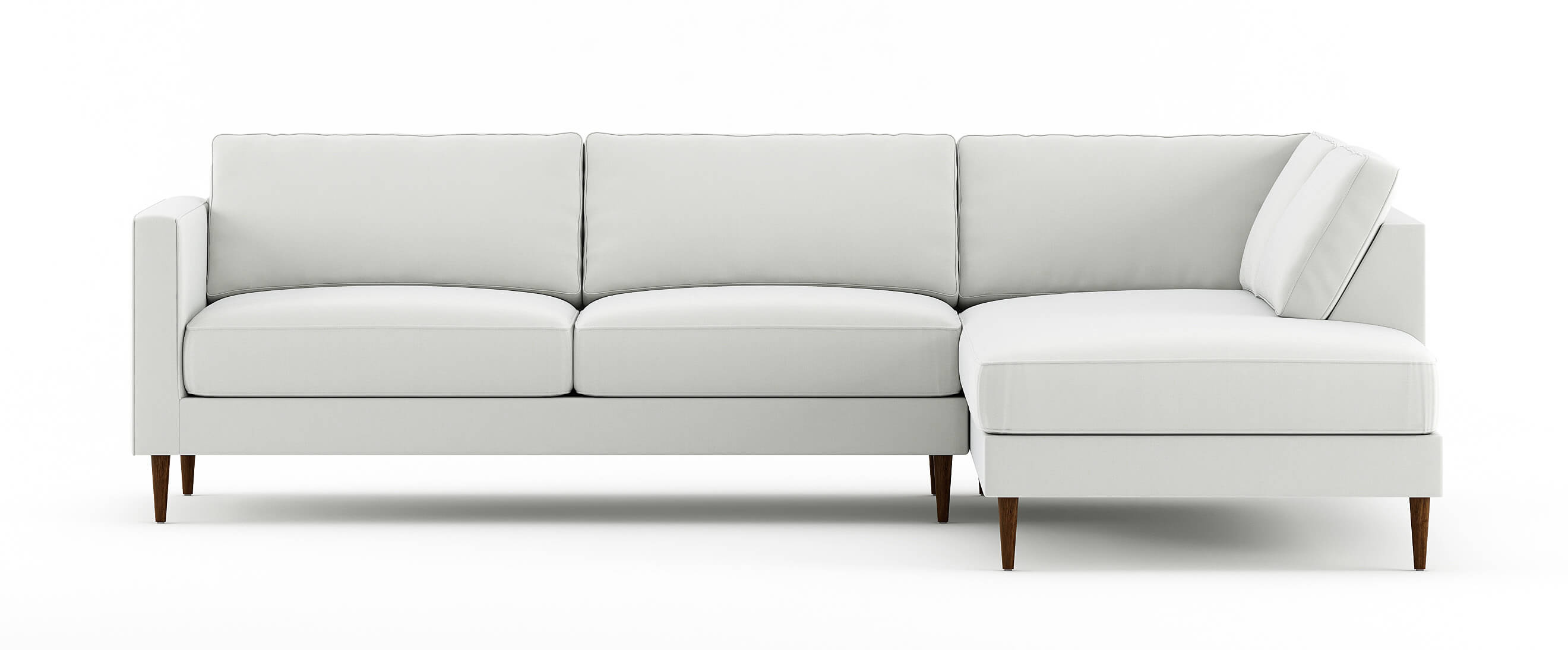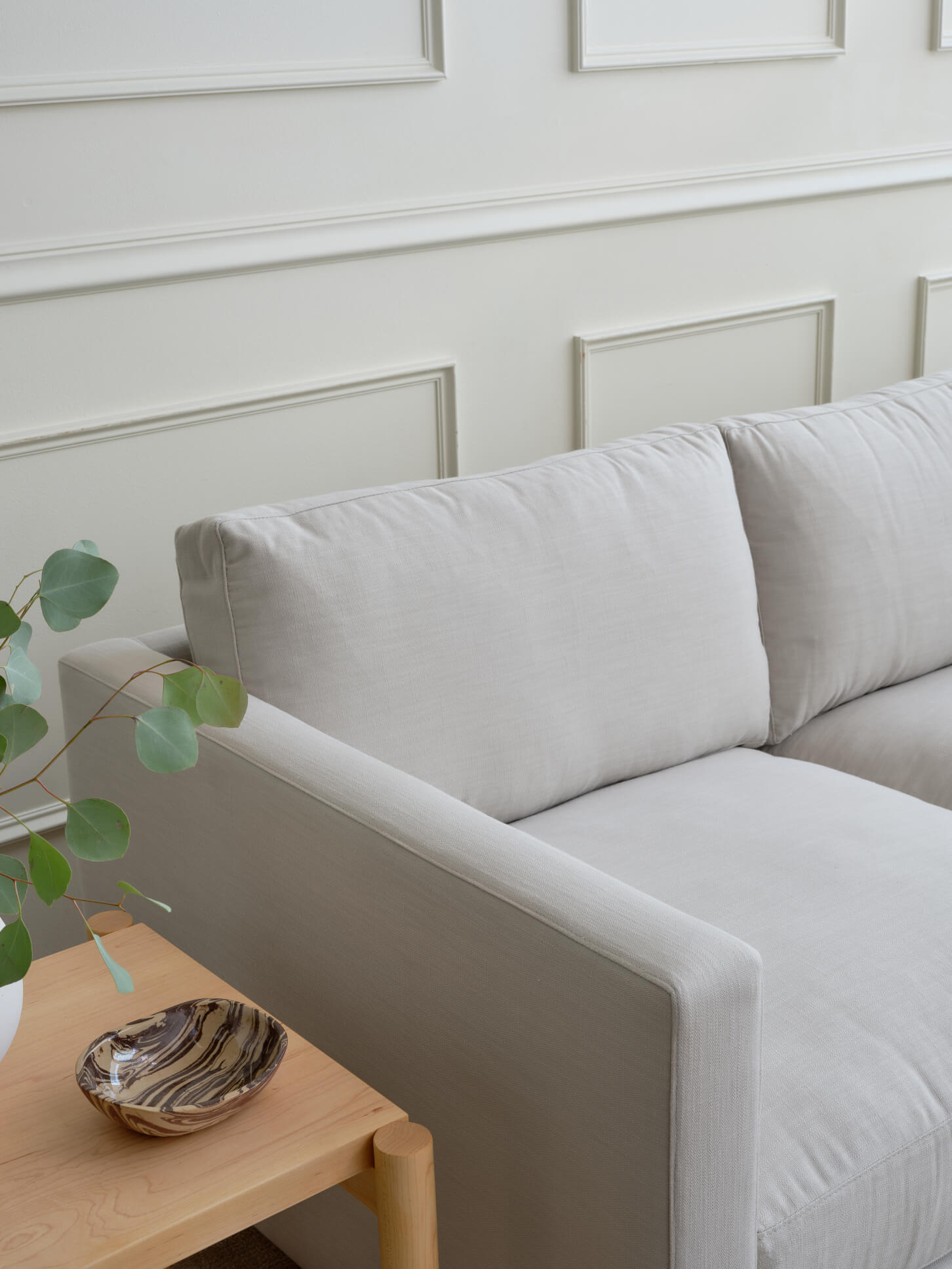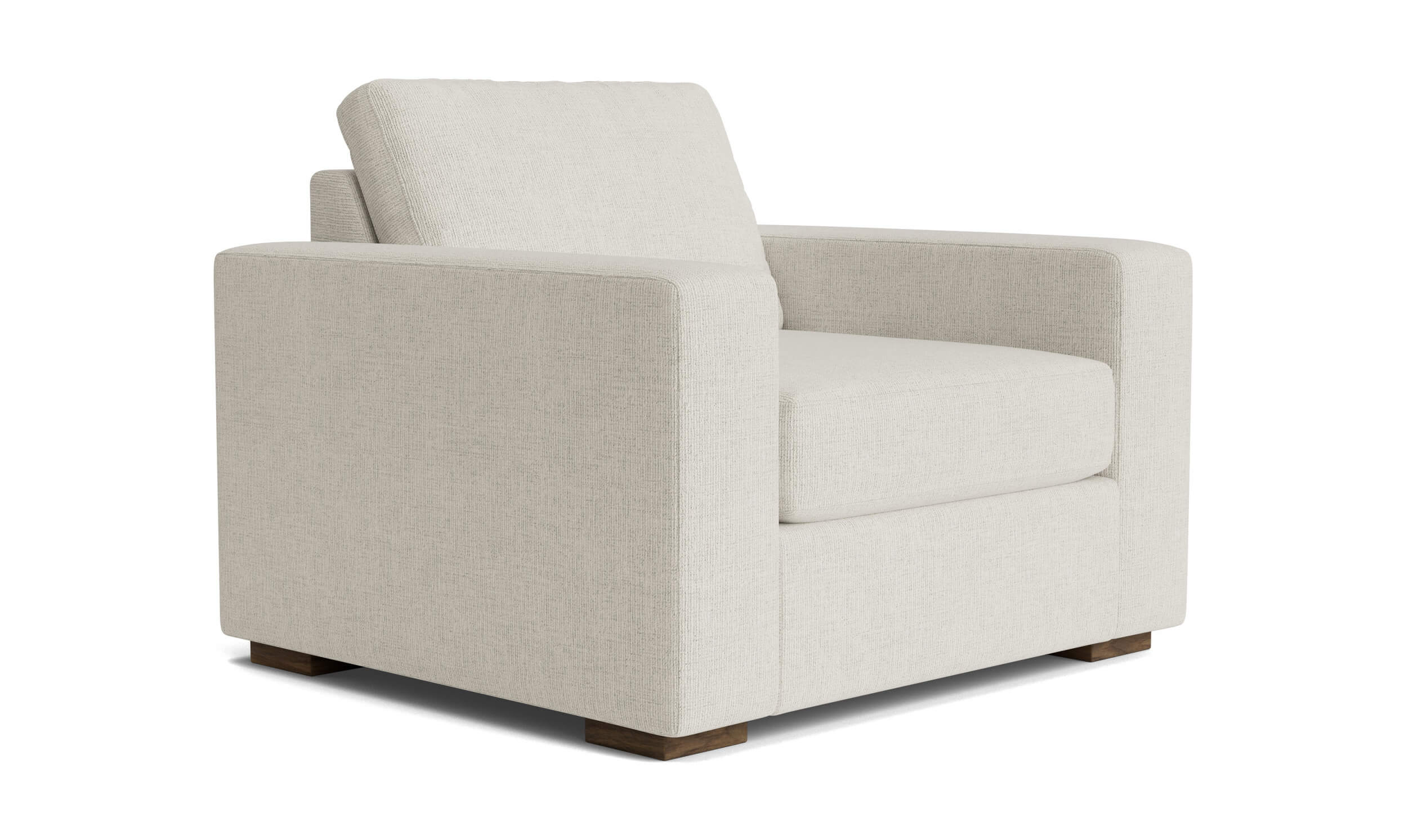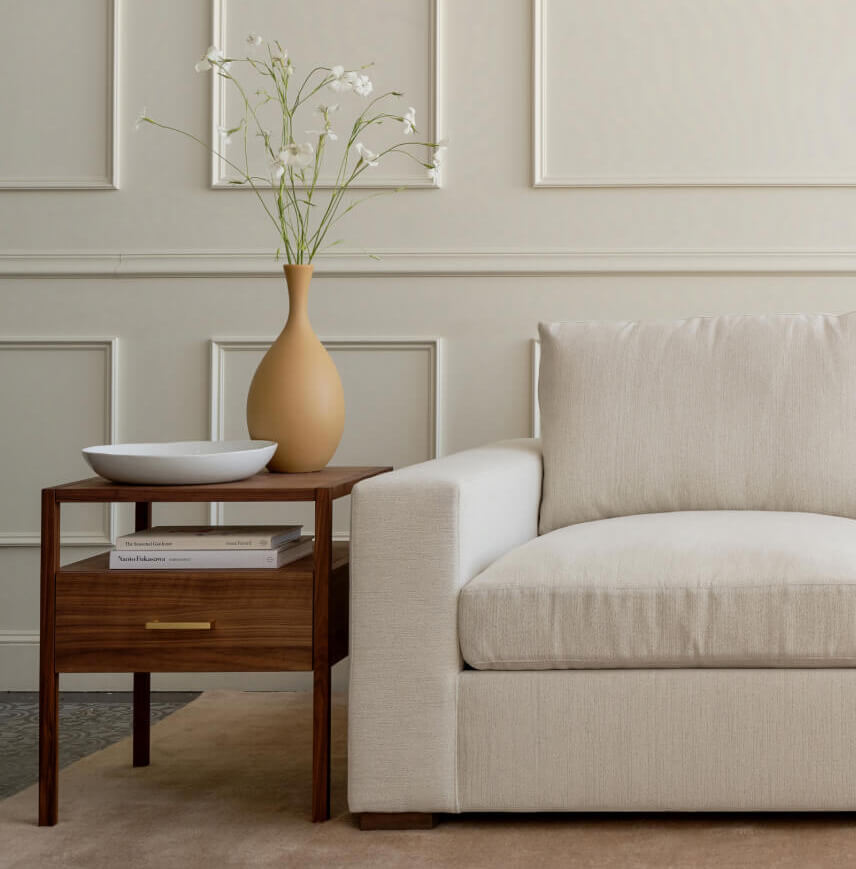
Much of what we know and recognize as modern design and architecture had its start at a small school in Germany that only existed for 14 years: The Bauhaus. This famous school of design started the Bauhaus Movement, which informed the entire Modernist movement worldwide. In fact, Bauhaus style has informed the streamlined silhouettes of our most popular sofa designs, including Mota, Lala, Blumen, and Gio.
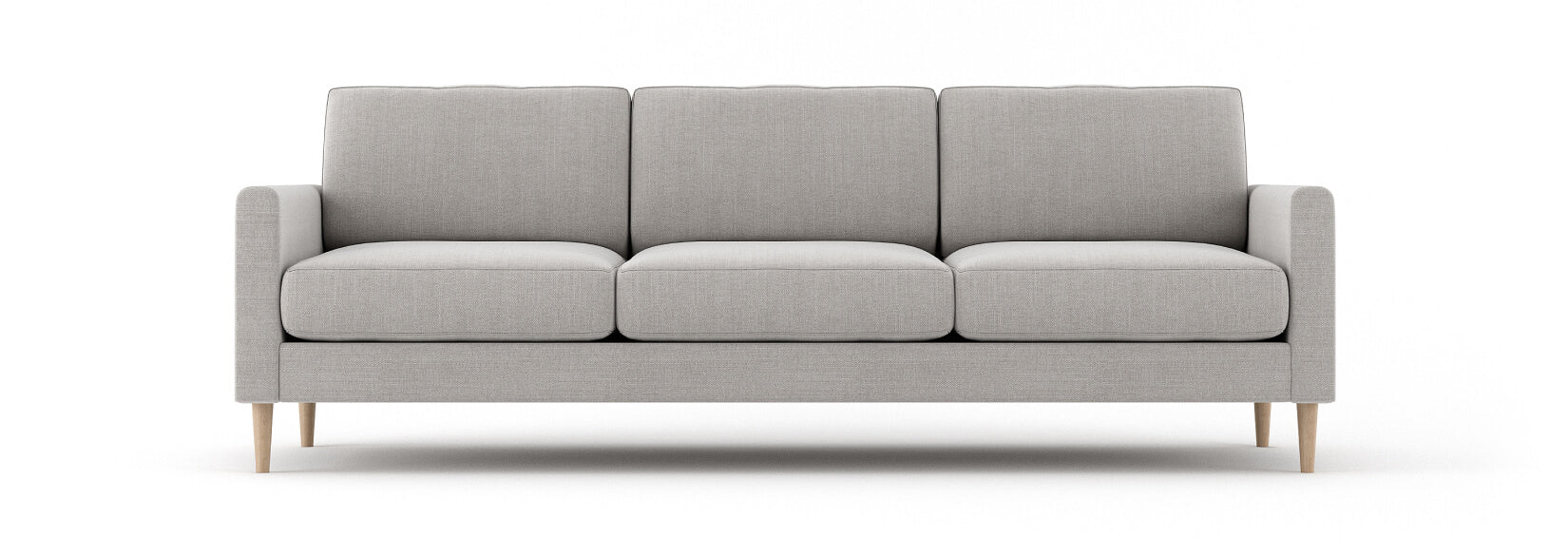 Image: Lala Sofa
Image: Lala Sofa
The foundation of the movement was inspired by the concept of uniting art and industrial design. The founders had the goal to bring art and design to everyday people by making everyday objects more interesting and more functional. This eventually led to their rallying cry of “form follows function.”
The school itself was started in 1919 in the city of Weimar by German architect Walter Gropius. The Bauhaus, which means “house of building,” required students of all backgrounds to receive basic instruction on color theory, materials, and general design. From there, they could move on to specialized study such as metalworking, cabinetmaking, weaving, pottery, typography, and wall painting. Gropius’ construction of the school aimed to reunite arts through craft.
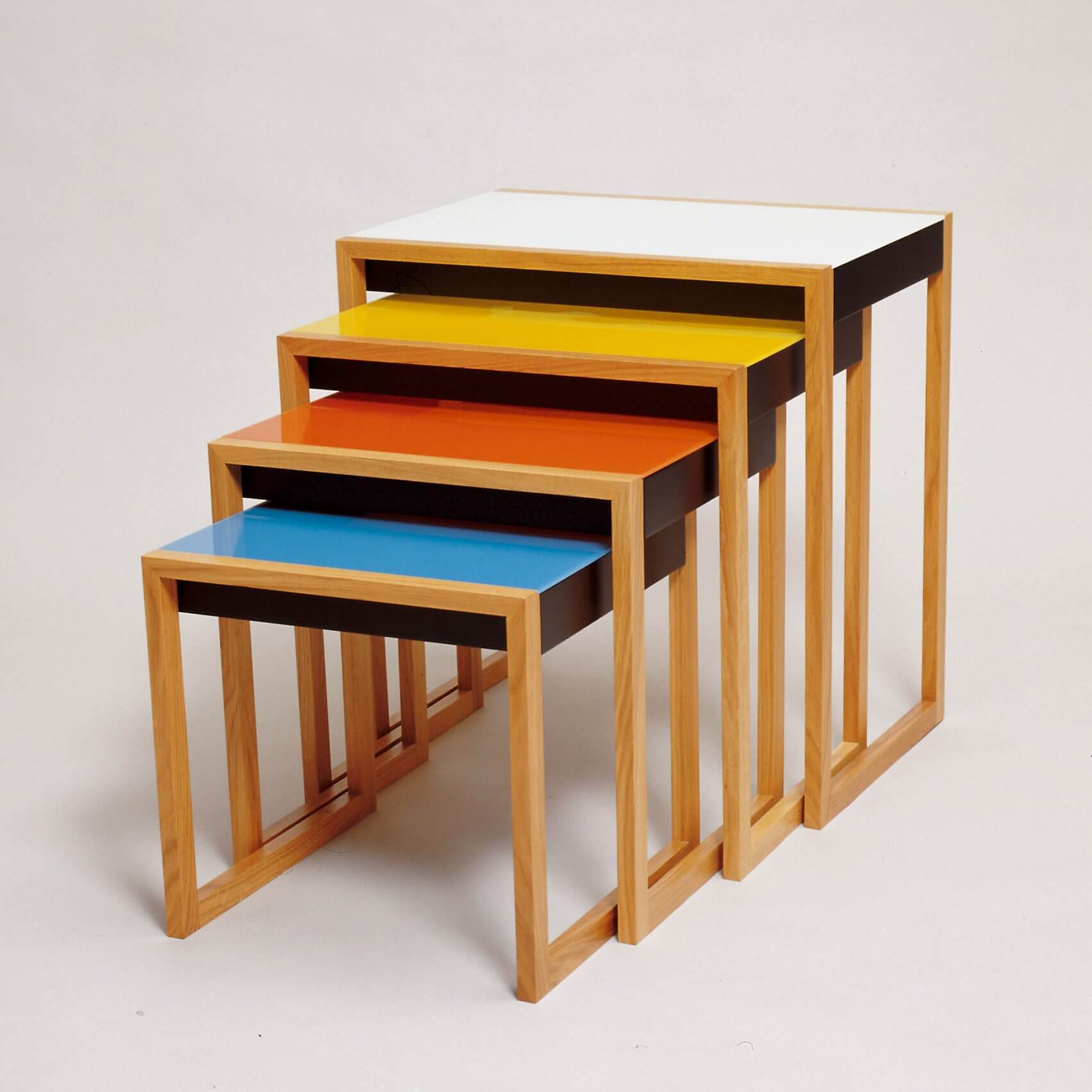
Image via Dezeen: Nesting Tables by Josef Albers
The courses encouraged students to incorporate technology into their designs, as well as emphasizing the need to create design that could be mass-produced. This is what led to the utilitarian-style design typically attributed to the Bauhaus movement. Following the mantra “form follows function”, students were taught to make everyday objects more beautiful, while still being accessible. In all, the Bauhaus movement believed “less is more” in everything from colors to furniture to teapots to architecture.
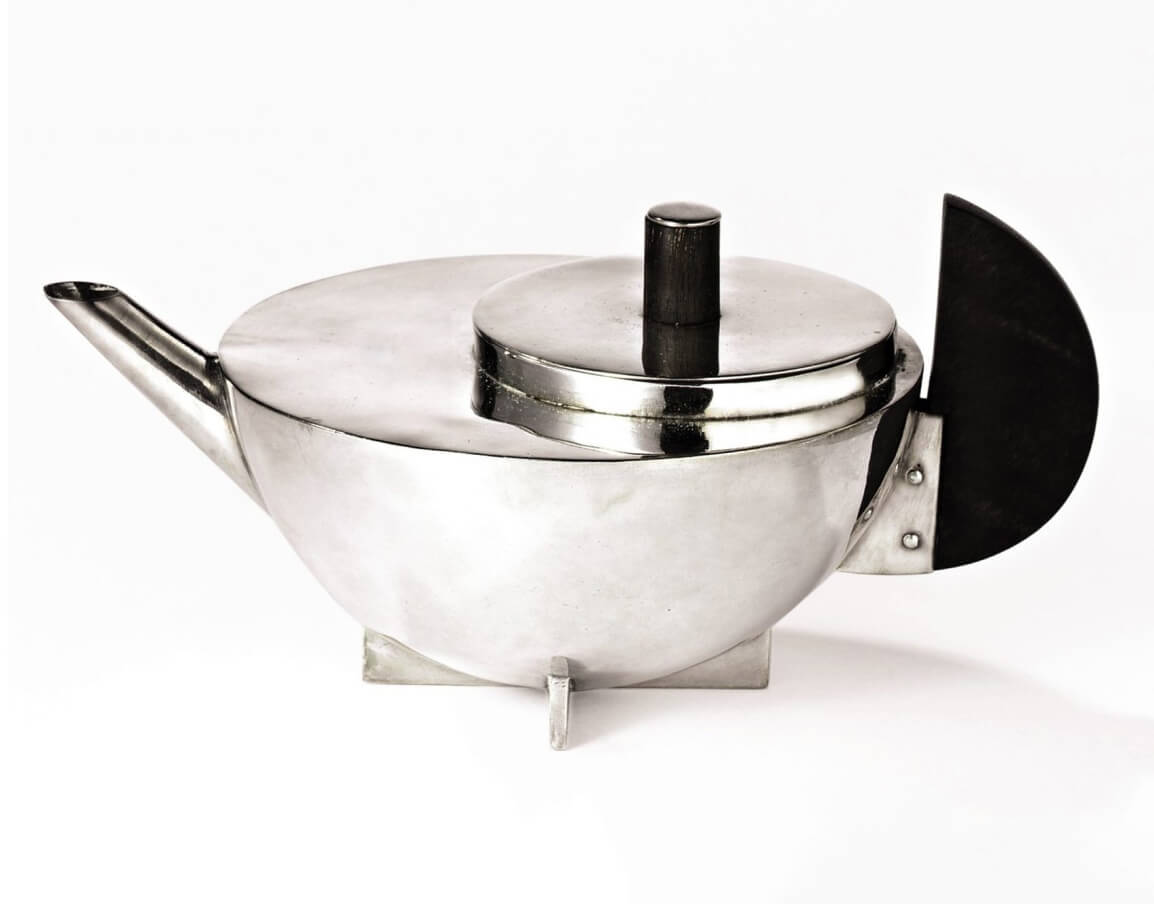 Image via Dezeen: Tea infuser by Marianne Brandt
Image via Dezeen: Tea infuser by Marianne Brandt
In 1925 the school moved to Dessau, where a new building showcased principles of modern design: steel-frame construction, a glass curtain wall, and an asymmetrical, pinwheel plan, where classroom and administrative spaces were designed out of a central hub.
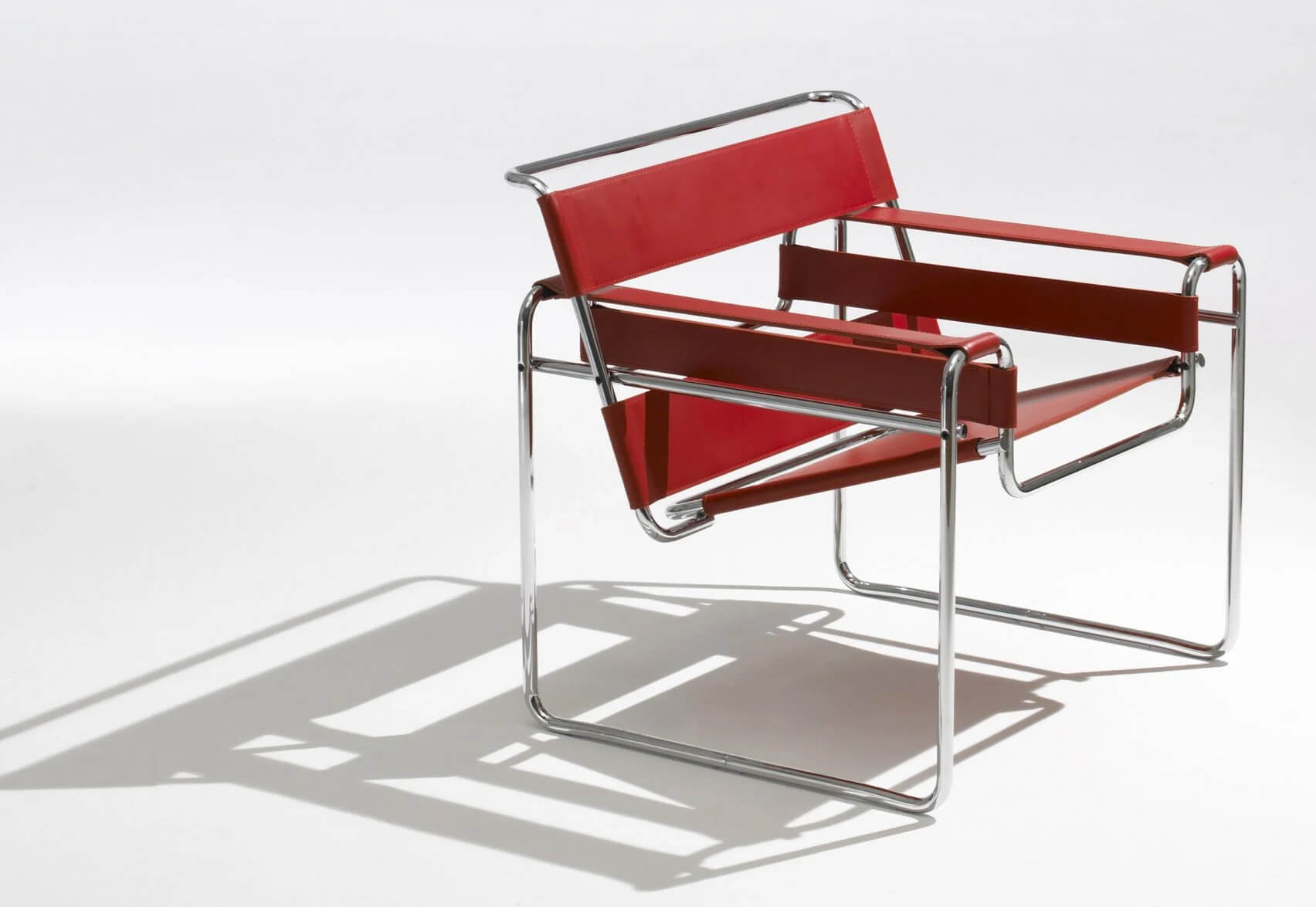
Image via Dezeen: Classic Wassily Chair by Marcel Breuer
Most of the workshops at the Bauhaus pioneered modernist design that we commonly see today. The cabinetmaking workshops sought to simplify furniture, coming up with designs for lightweight metal chairs that could be mass-produced.
The textile program encouraged experimenting with different materials and created pieces that were hung throughout the school as a contrast to its stark spaces. The weaving program also allowed and encouraged many women to attend the school, which was uncommon during this time period.
A change in hands of leadership had Hannes Meyer leading the school, and starting the first architecture department. However, his communist leanings garnered too much attention, and he was replaced by architect Ludwig Mies van der Rohe. Unfortunately, the rising Nazi party caused the school to relocate again to Berlin, where it was forced to shut down just one year later.
Ironically, the closure of the school by the Nazis did not dampen the Bauhaus movement, instead causing it to spread world-wide as its students moved out of Germany. It’s graduates and professors went on to pioneer design schools throughout America, at Harvard, the Chicago Institute of Design, and Black Mountain College, an incubator of the American avant-garde.
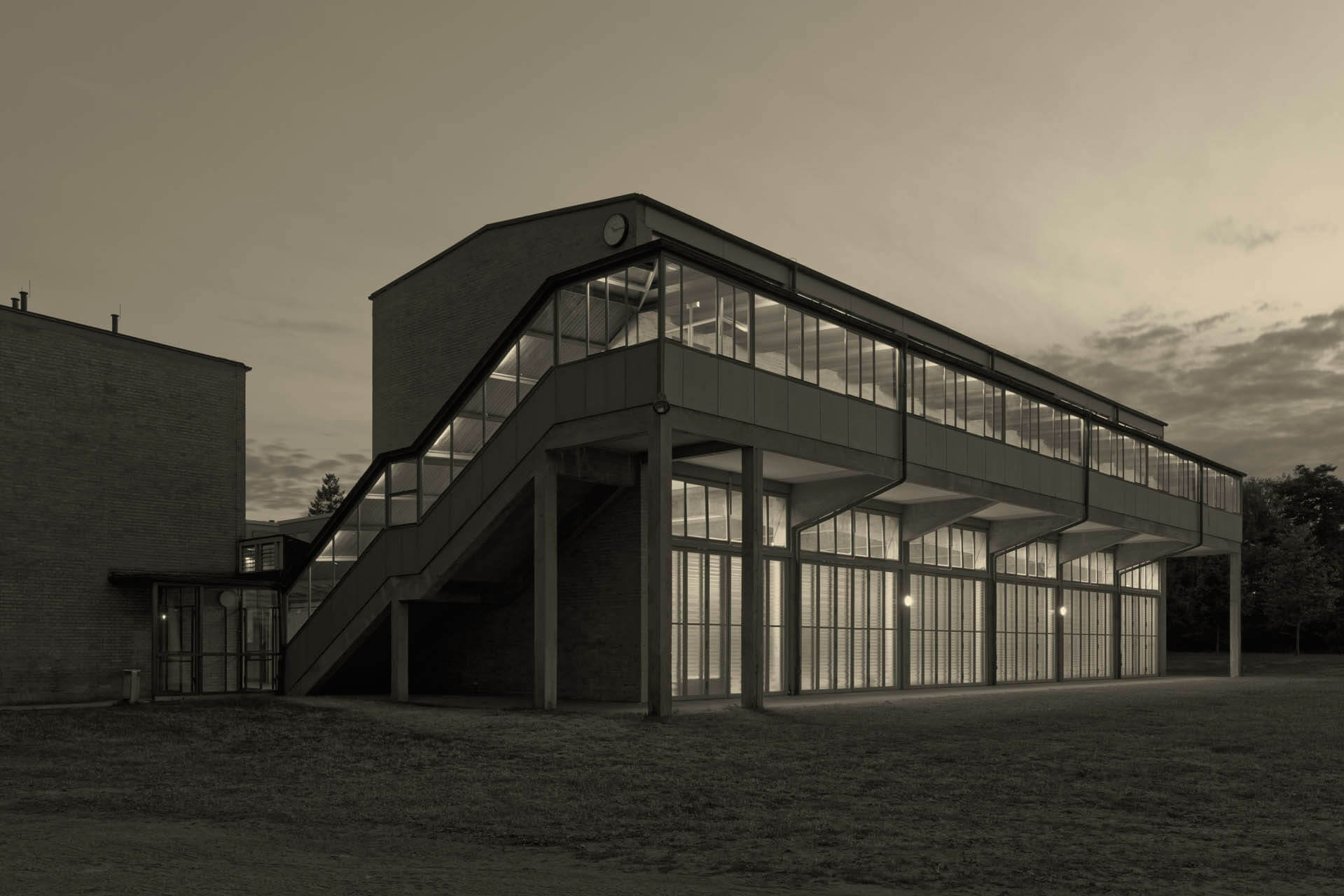
Image © via Bauhaus Denkmal Bundesschule Bernau: ADGB Trade Union School
Berlin is also full of Bauhaus architecture, such as the ADGB Trade Union School, a zigzagging complex of brick, steel and glass surrounded by forests and the autobahn. You can take a tour through the most famous Bauhaus-style buildings in Berlin to see how they’ve influenced the overall architecture of the city.
Today, the Bauhaus movement can be seen almost everywhere. Its commitment to finding solutions that were simple, rational, and functional is an approach still taught to artists and designers today. Bauhaus design is simple and useful, and the simplicity is what makes the everyday objects beautiful.
Some of the items created by Bauhaus students during this period are still reproduced today, such as lamps and chairs. And even if they aren’t direct imitations, echoes of their design are often found in contemporary furniture and appliances. You can see this in the sleek lines, experimental use of materials, and strategic colors of design from the 1950s-1960s, as well as contemporary recreations.
Look at the skyline of any major city. All those towers of glittering glass and steel wouldn’t be there if it weren’t for Bauhaus architecture style. Bauhaus greatly influenced modern graphic design and topography, too. Look out for posters, geometric art, and even clothing that relies on stark geometrical shapes, simplicity, elegance of design, and primary colors. This was revolutionary at the time, but today is just seen as good design.

Image via AIGA: Research in Development of Universal Type by Herbert Bayer, 1927. Harvard Art Museums/Busch-Reisinger Museum, © Artists Rights Society (ARS), New York / VG Bild-Kunst, Bonn.
The Bauhaus school itself even changed the way students study art. Today’s art students must take classes across disciplines for a holistic study of art making, whether it’s graphic design or fine art, and are encouraged to build things that work for the person using it, making their needs a priority.
When you start looking for it, you’ll realize just how far the Bauhaus movement has traveled from a small town in Germany. Its influence on modern design is felt worldwide, in everything from pens to skyscrapers, and continues to inspire our sofa, sectional, dining, and bed designs at Medley, along with our values around material innovation—one inspiration behind our plant-based latex and wool furniture.
Thanks to Bauhaus, our lives are all a little easier.




